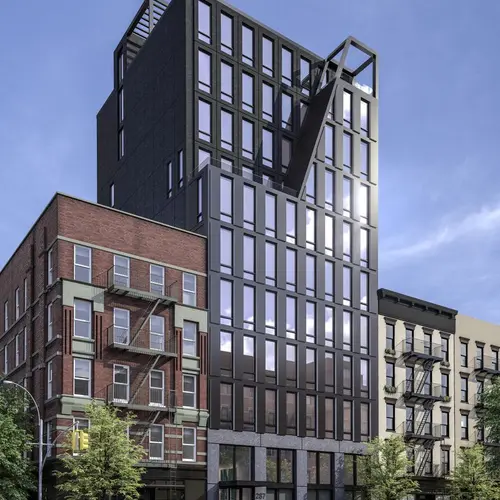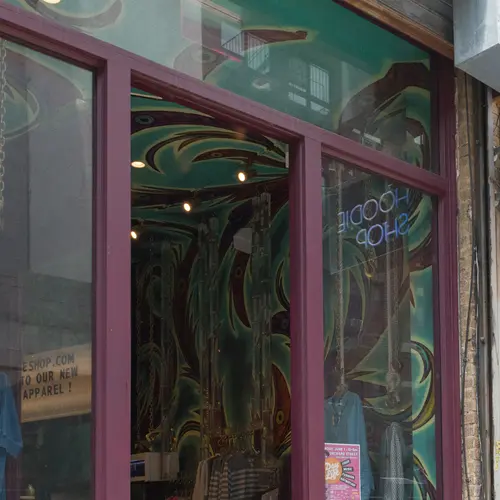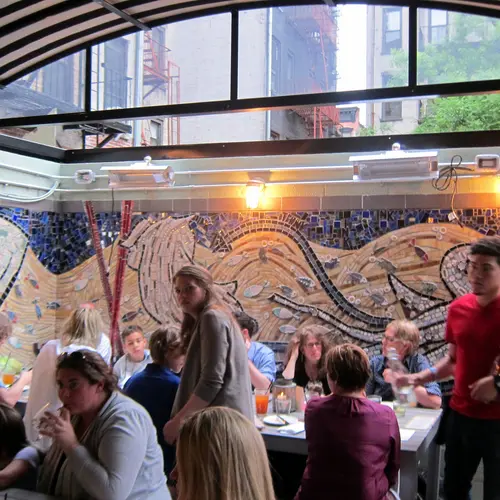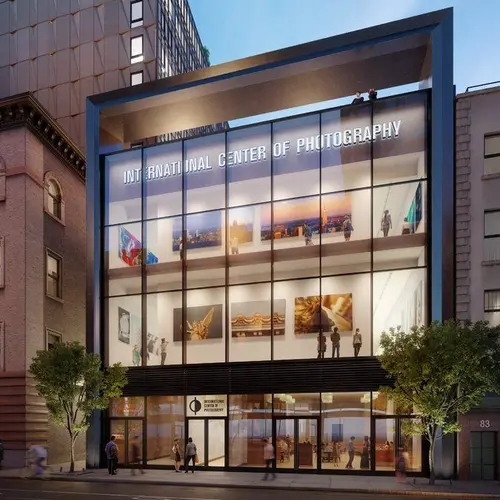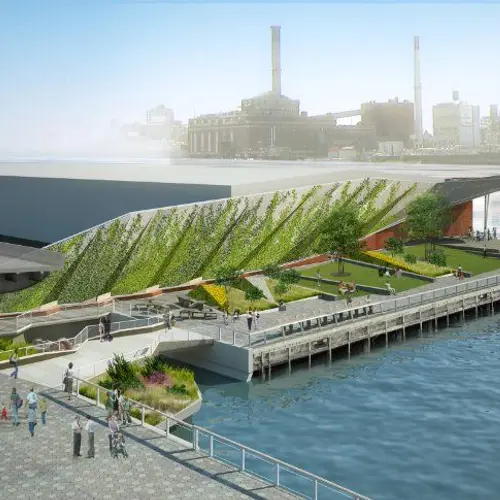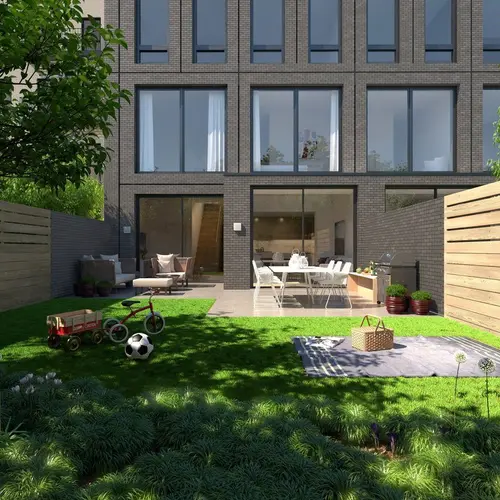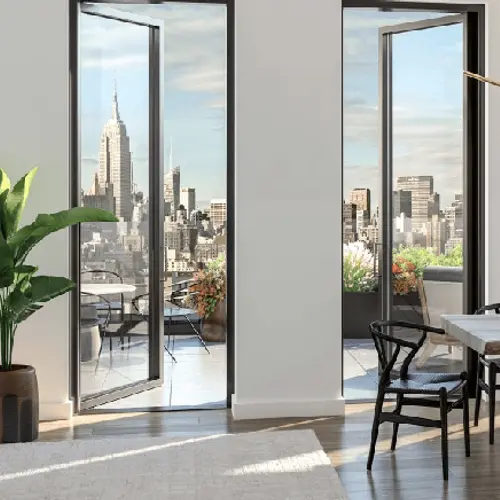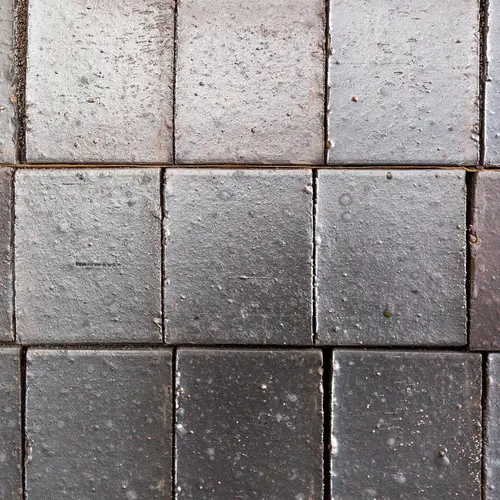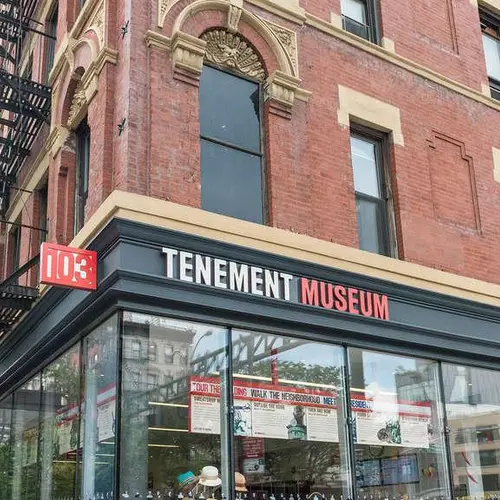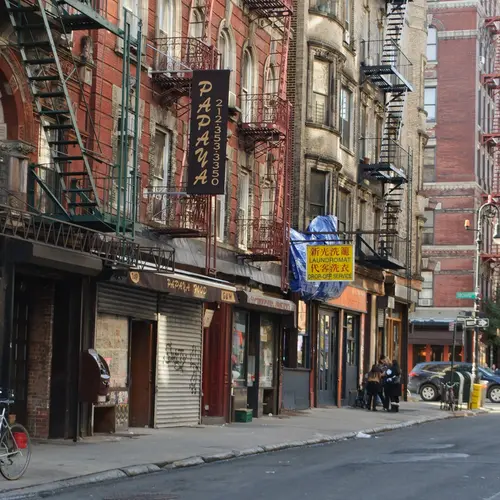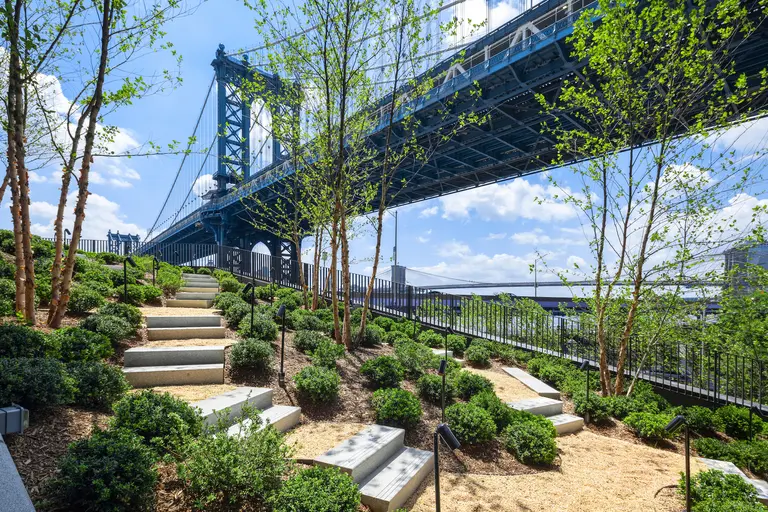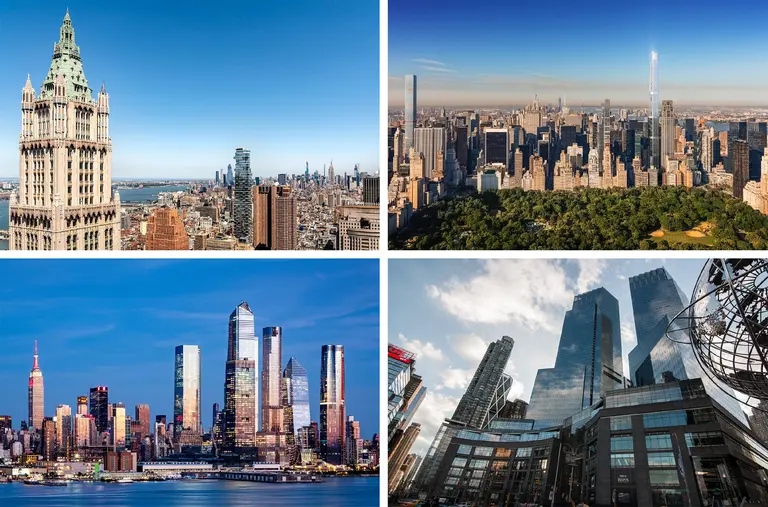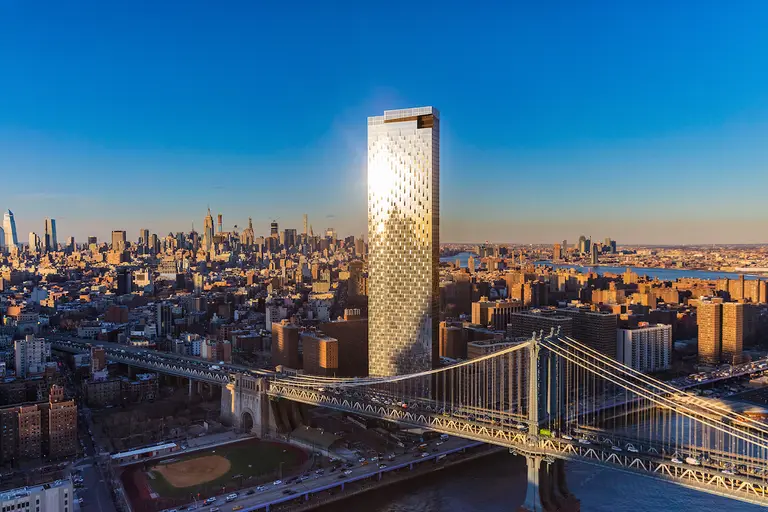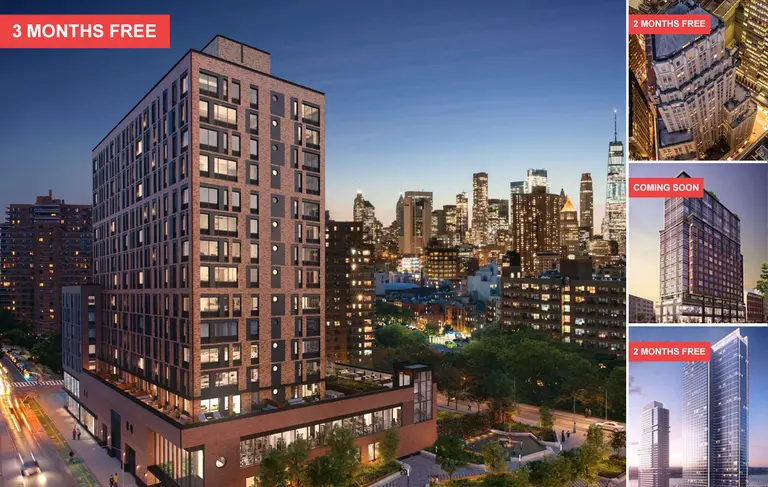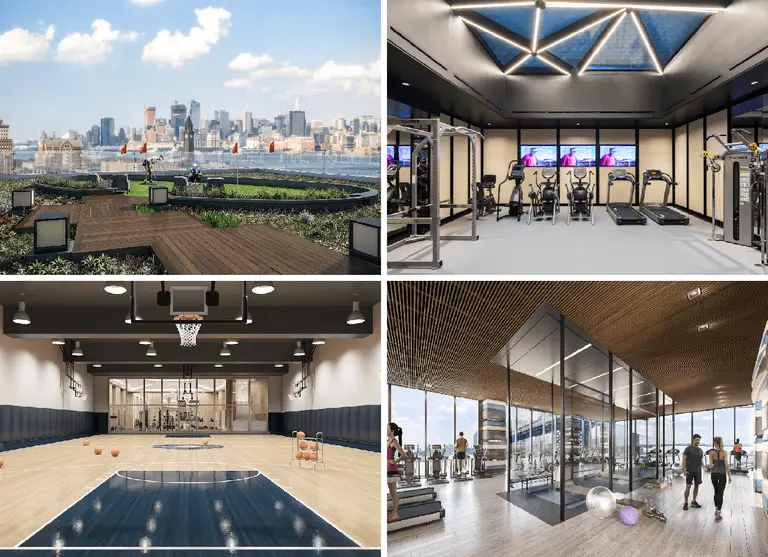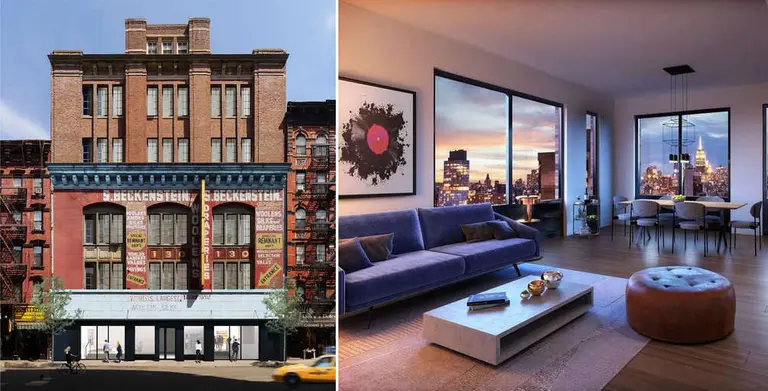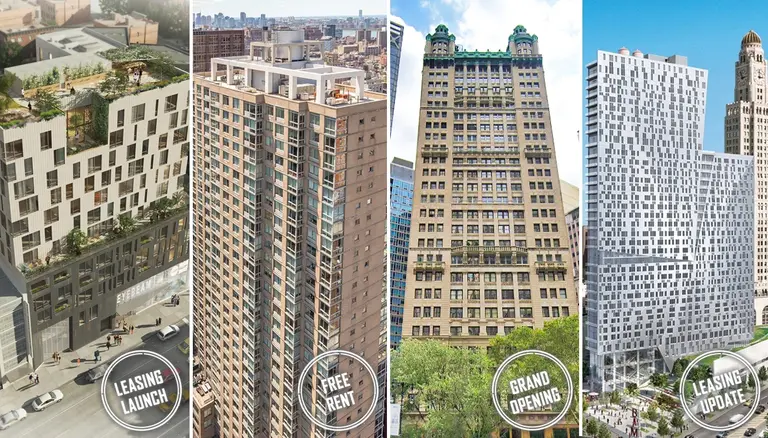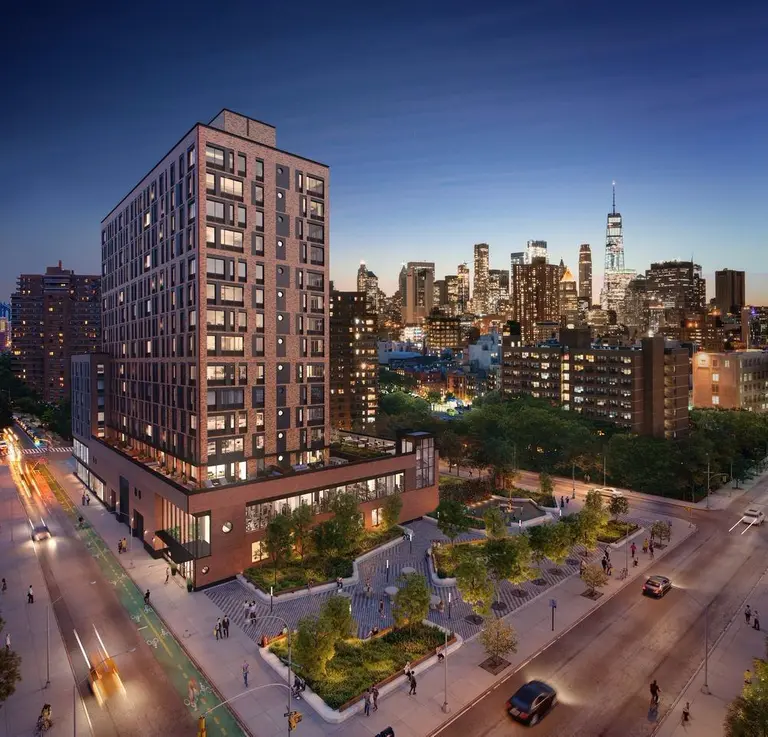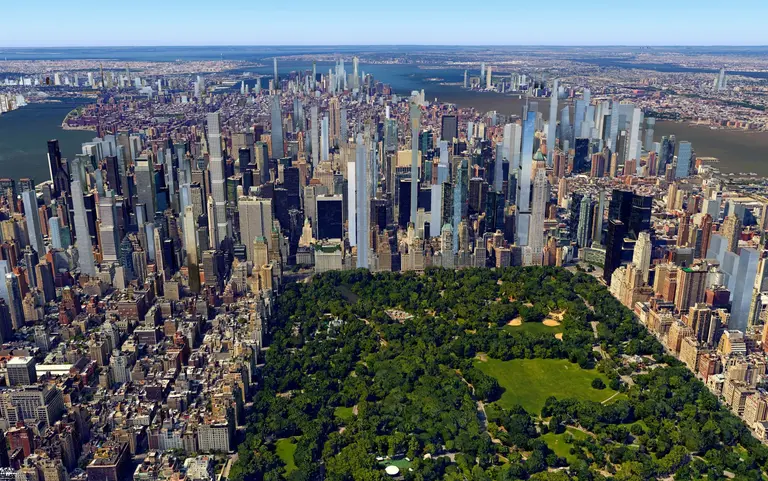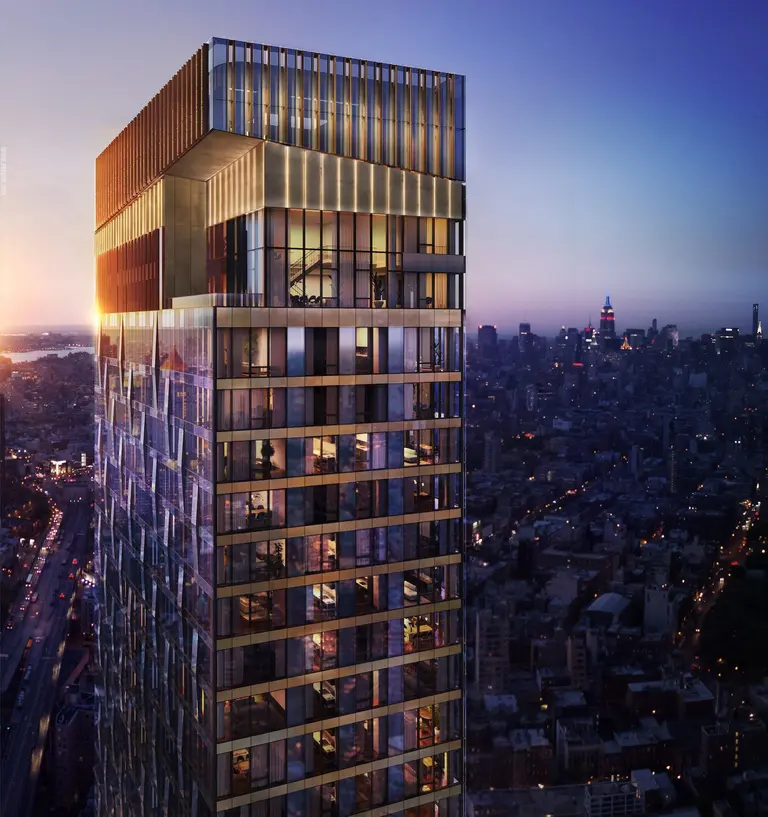The final frontier of history and hip: Developments and amenities shaping the Lower East Side
For many New Yorkers, the Lower East Side is one neighborhood that still has a lot of authenticities and good ‘ole New York grit left. It has been described as Manhattan’s “last frontier of cool. The promised land of old as well as new… Where the Godfather lives side by side with a hipster movie.” Put more tangibly by Benjamin Baccash of Taconic Investment Partners, the developer of LES’s Essex Crossing, “The Lower East Side has wonderful restaurants, art galleries, and great street life. It’s a real neighborhood and that’s what a lot of people are looking for.”
In addition to great diversity, personality, and transportation, the city is undertaking huge improvements on the east river waterfront, and developers are erecting new developments at all corners of the ‘hood. Ahead, 6sqft takes a look at everything that’s keeping the Lower East Side a vestige of old New York during its contemporary resurgence, from massive projects like Essex Crossing to a booming art gallery scene.
History
Located between the Bowery and the East River/FDR Drive and Canal Street and Houston Street, the LES was traditionally an immigrant, working-class neighborhood. Most of the immigrants who came to New York City in the late 19th and early 20th centuries settled on the Lower East Side and lived in rundown tenements. The area saw an influx of German, Greeks, Hungarians, Polish, Romanians, Russians, Slovaks and Ukrainians. “Little Germany” contained half of New York’s German population and was the third-largest German-speaking community in the world, after Berlin and Vienna. In the 1920s, a largely Jewish neighborhood grew in the LES and they dominated the pushcart vendors market.
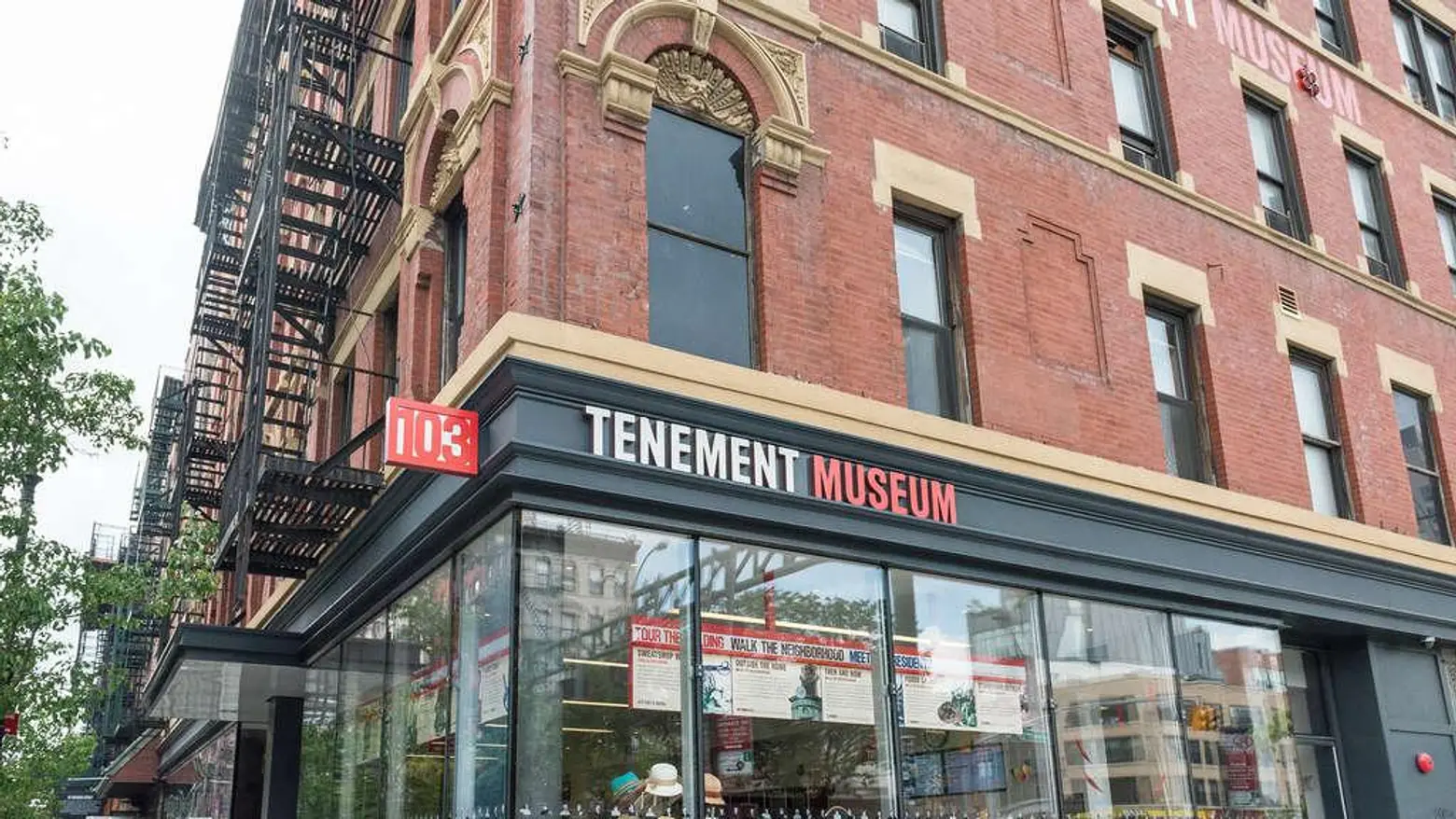 Tenement Museum, via CityRealty
Tenement Museum, via CityRealty
The Tenement Museum at 103 Orchard Street gives excellent educational tours of the history of the LES and living conditions. The building the museum is a former tenement that housed over 15,000 working-class immigrants from over 20 countries before becoming a museum.
In 1901, the “New Law” was enacted to improve living conditions in tenements. They had to call it “new” to distinguish it from the two previous tenement laws which clearly did not have the desired effect. The new law required tenements to include large courtyards, improving on the 1879 Old Law’s small air shafts requirements (creating dumbbell buildings). It also required one toilet per apartment and stricter enforcement of the lot coverage provision for minimum sanitation, light and air standards.
In the early to mid-1900s, the neighborhood became associated with radical politics, such as anarchism, socialism, and communism. It was also a hub of creativity as popular performers like the Marx Brothers, Eddie Cantor, George and Ira Gershwin, and Jimmy Durante settled here. Later, more radical artists such as the Beat poets and writers were drawn to the neighborhood because of the inexpensive housing and food.
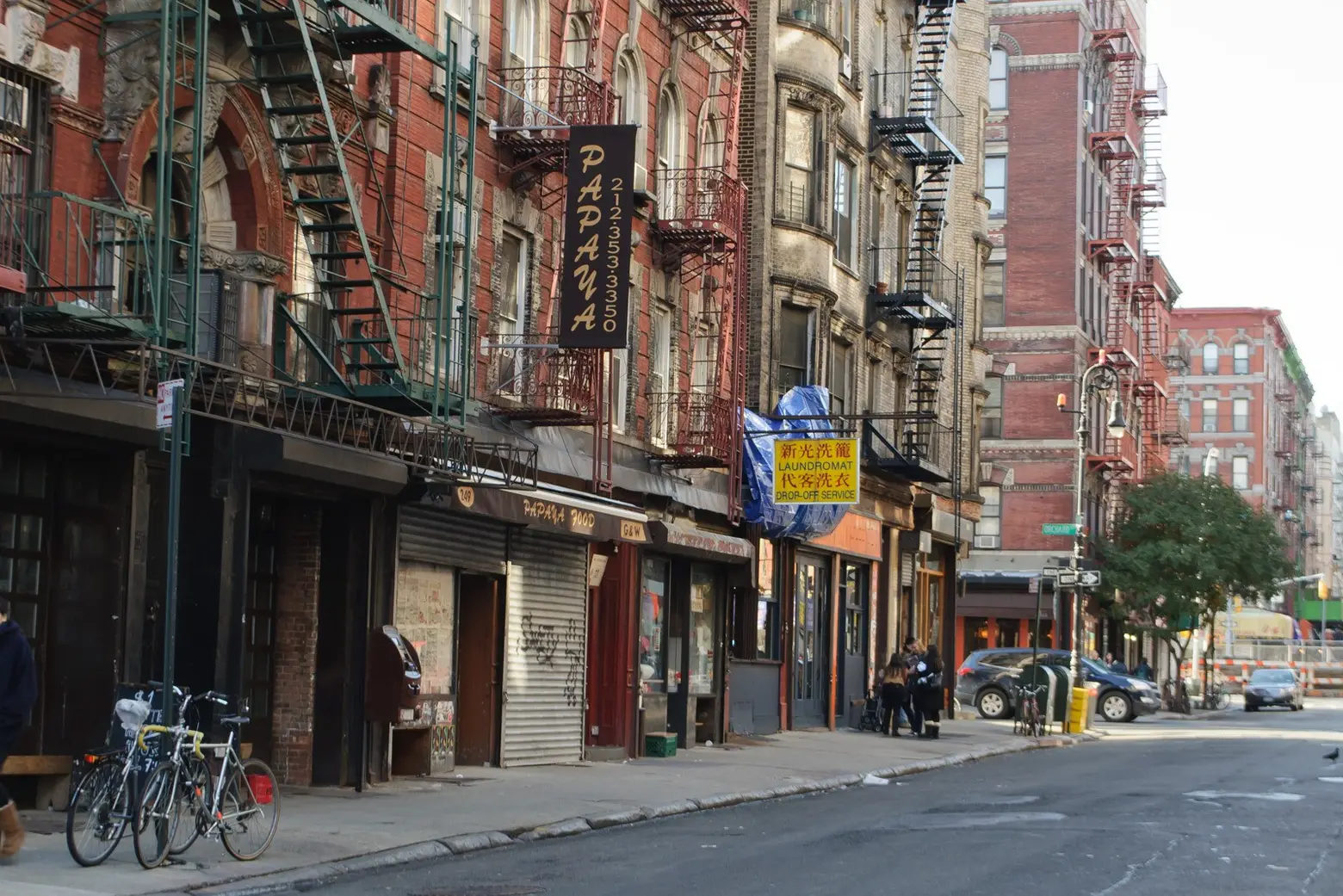 The Lower East Side today, via InSapphoWeTrust / Wiki Commons
The Lower East Side today, via InSapphoWeTrust / Wiki Commons
The East Village distinguished itself from the Lower East Side in the 1960s and they became two distinct neighborhoods. Today, the neighborhood is quickly becoming one of New York’s most desirable destinations to live, dine, shop, and play. Along with its rich history and thriving art gallery scene, there is a new wave of residential buildings, trendy eateries and hip hotels, including the lauded PUBLIC from hotelier Ian Schrager and the Soho House offshoot, Ludlow House. The arrival of Essex Crossing, a massive 1.9 million-square-foot mixed-use development, will have quite a huge impact on the neighborhood.
New Residential Developments
Not only is the Lower East Side hip, it’s also a good investment. Prices for condominiums in neighborhoods near the Lower East Side have soared in recent years, according to data from real estate appraisal firm Miller Samuel. In 2016, Soho/Tribeca’s average price per square foot was up 55% from 2012. In Greenwich Village, this figure rose 66.5%. But prices rose by only 28.5% on the Lower East Side, where the average price per square foot is $1,285, suggesting the neighborhood may be one of the last value plays left downtown.
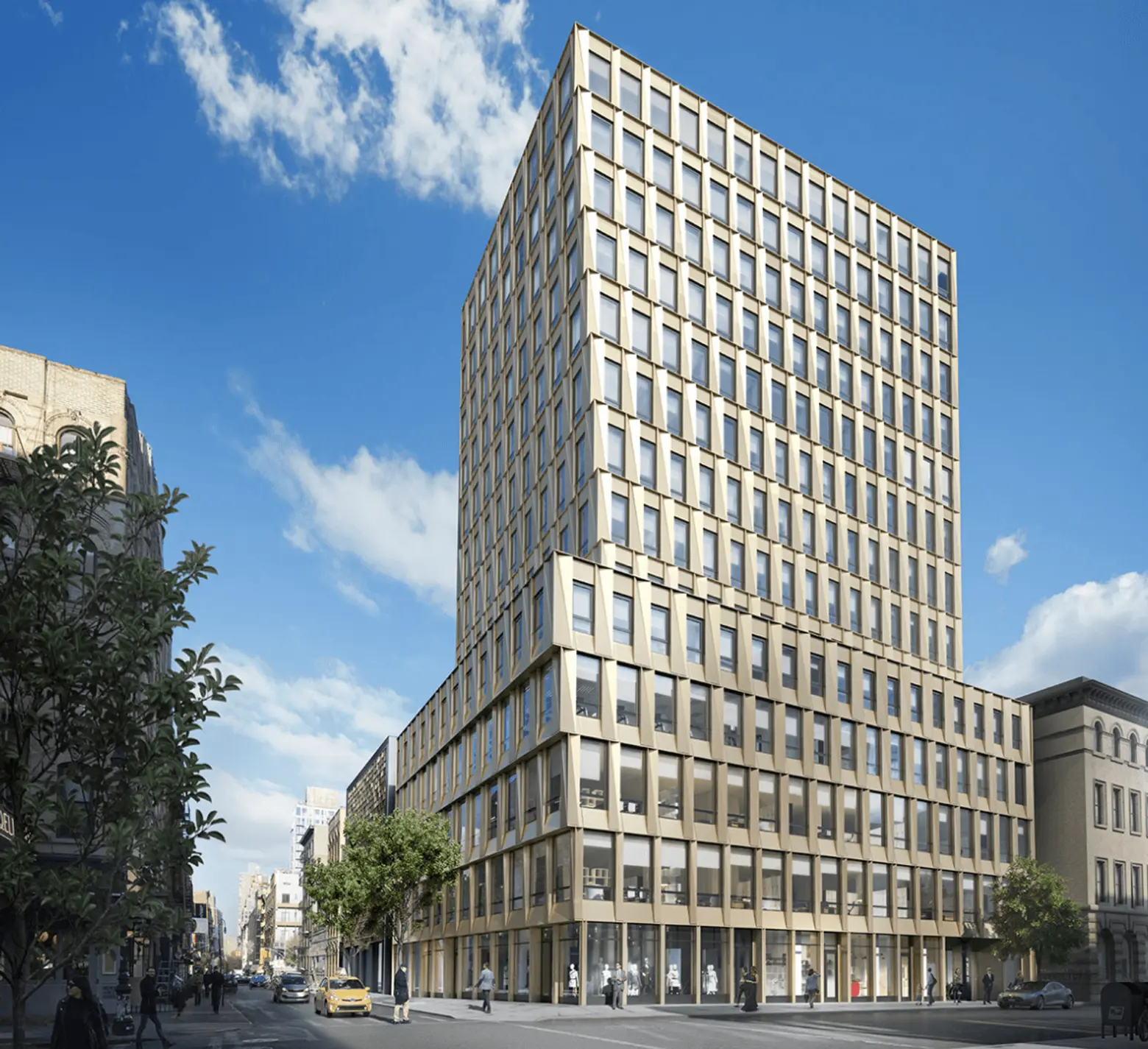 Rendering of 242 Broome Street via SHoP Architects
Rendering of 242 Broome Street via SHoP Architects
Now, luxury towers are sprouting along the neighborhood’s bustling streets. Opening in a few months, the SHoP Architects-designed 242 Broome was built on a previous surface parking lot, “which made this corner of the neighborhood feel really inactive,” said Benjamin Baccash. The building features a champagne-colored façade of anodized aluminum, with bends and angles in the metal evoking the iconic fire escapes of the neighboring tenement buildings. Located at the corner of Broome and Ludlow Streets, the 14-story building will have 55 units.
Because of the low-rise nature of the current neighborhood, the 360-views from the fifth floor up can, “span as far as the Verrazano bridge, on a clear day.” Amenities will include, an entertainment lounge (“Big enough to host a Thanksgiving dinner if you don’t want to host in your apartment,” says Baccash) a pool area, a gym filled with natural light on the fourth floor, a children’s playroom, and a landscaped rooftop terrace with two grills.
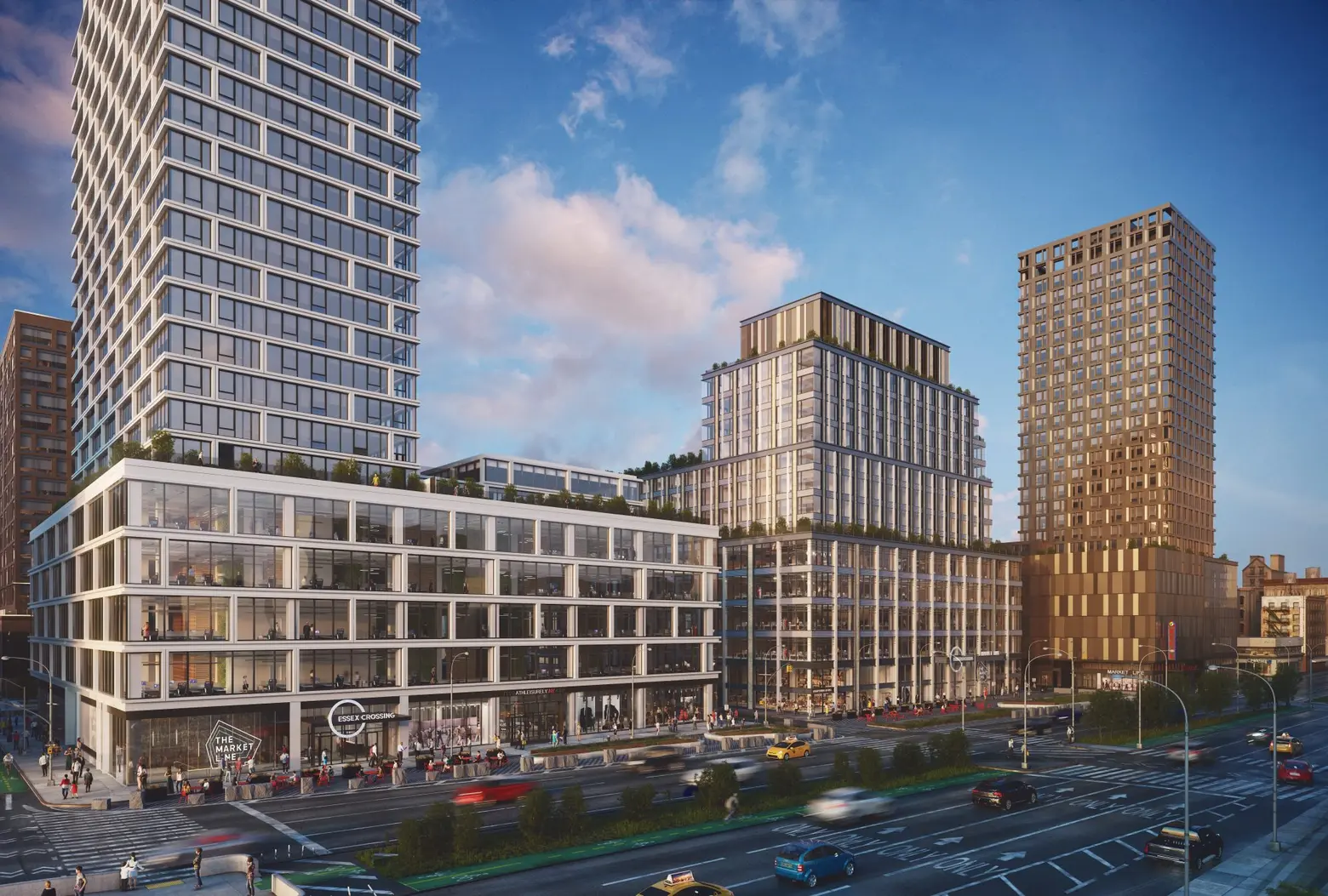 Rendering of Essex Crossing via Moso Studio
Rendering of Essex Crossing via Moso Studio
Essex Crossing is the previous Seward Park Urban Renewal Area, the largest stretch of undeveloped City-owned land in Manhattan below 96th Street. It will include 1.9 million square feet of residential, commercial, and community space on nine sites set across six acres that had sat mostly vacant since 1967 and represent one of the most significant urban renewal developments in the history of New York City. The project, expected to be completed by 2024, includes 1,079 residential units, 350,000 square feet of Class A office space, 400,000 square feet of retail space, one of the world’s largest food halls, and the new home of the International Center of Photography, which will open in 2019 within 242 Broome — Essex Crossing’s first condominium building.
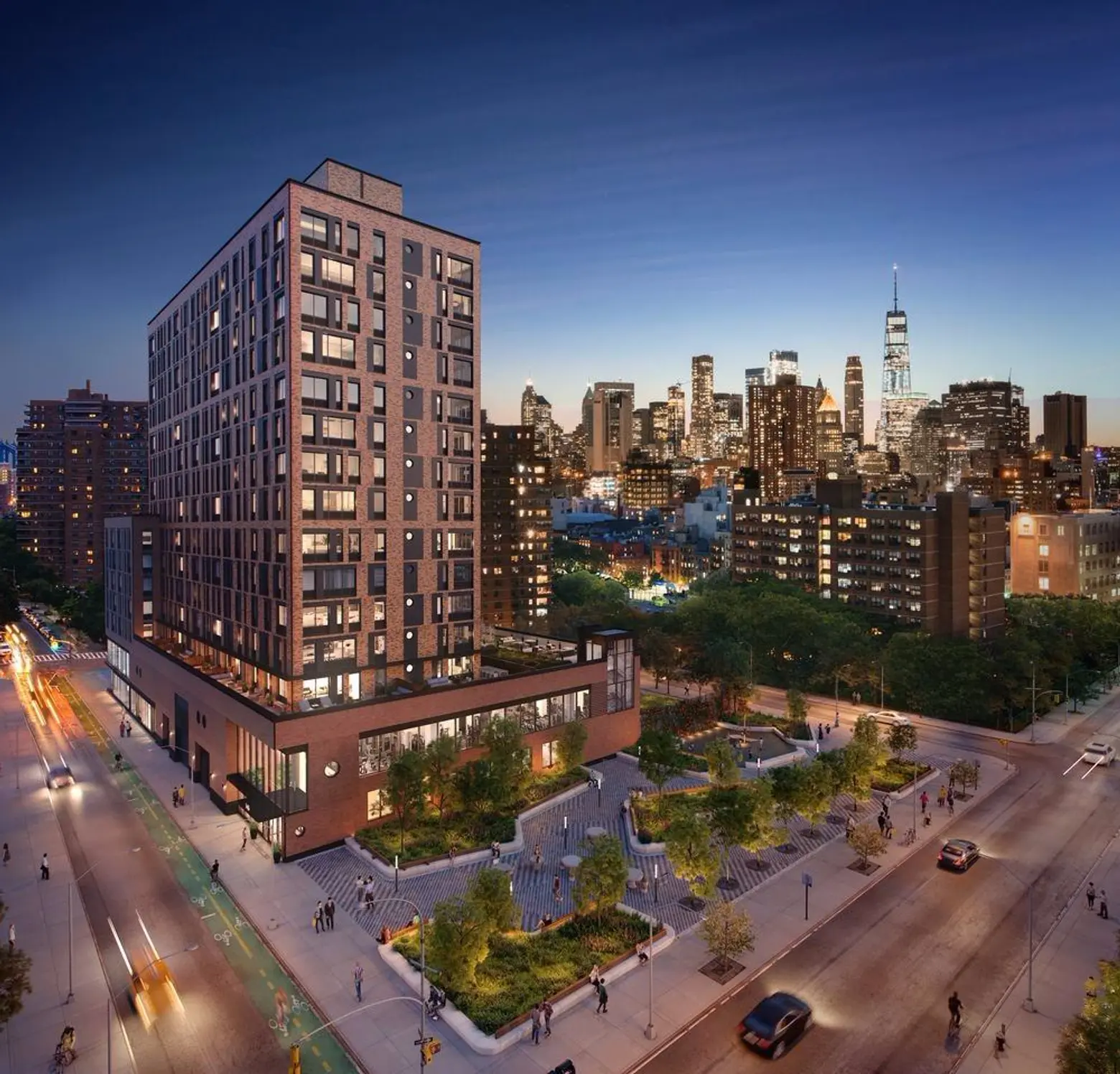
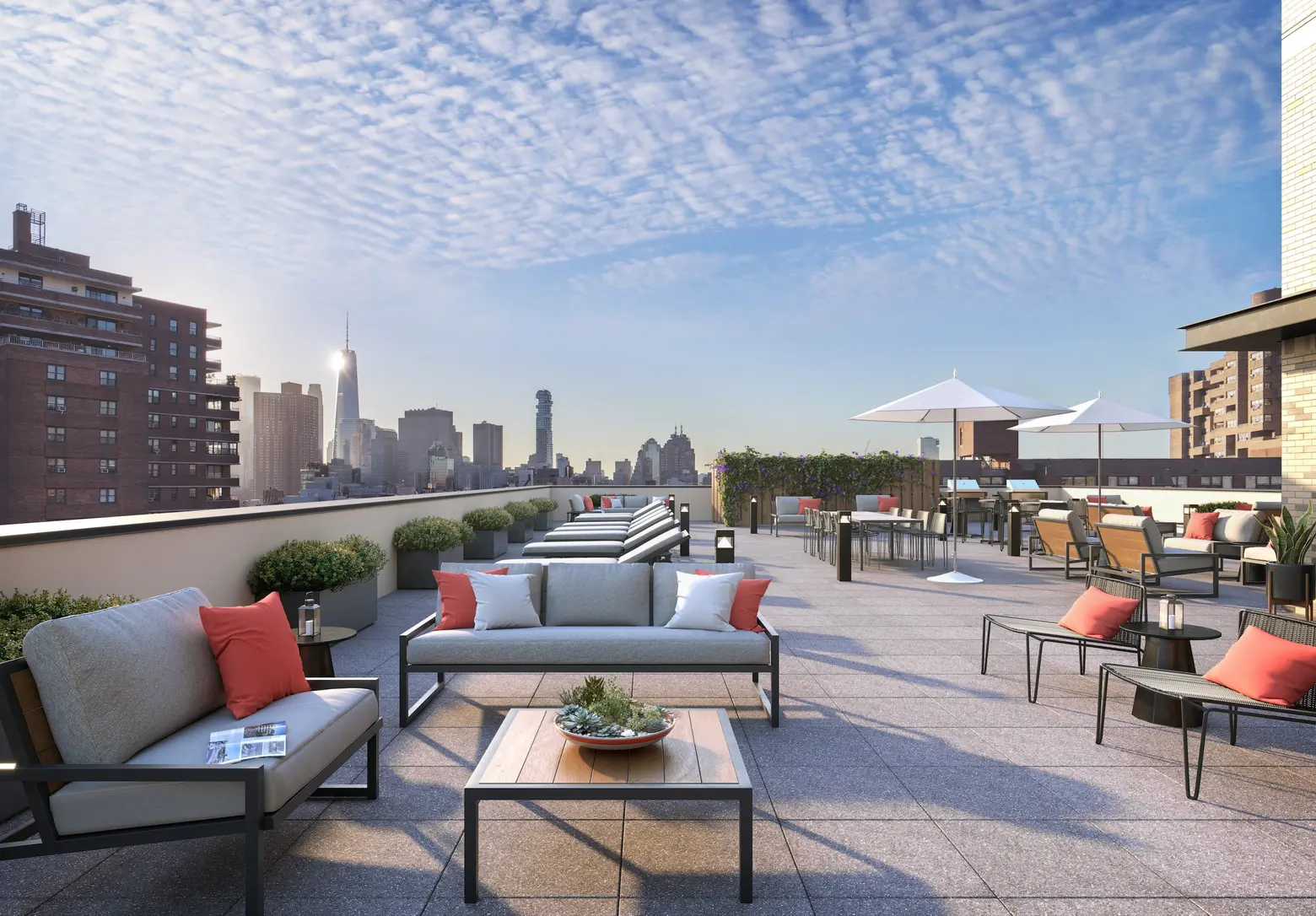 Renderings of the Rollins, courtesy of Delancey Street Associates/ Beyer Blinder Belle
Renderings of the Rollins, courtesy of Delancey Street Associates/ Beyer Blinder Belle
The Rollins, the first of Essex Crossing buildings to open, is a 16-story building at 145 Clinton Street. It has 107 market-rate residences in a varied mix of studios to three-bedroom residences, as well as 104 low- and middle-income apartments, the lottery for which opened last March. It also boasts a 15,000 square foot community park designed by world-renowned architects, West 8, that includes a children’s play area. Amenities also include a residents’ lounge, rooftop deck with grills, elevated garden terrace, fitness center, pet spa and bike storage. Plus, the base will hold a Target and a Trader Joe’s. The building was named for legendary jazz saxophonist Sonny Rollins, who lived in an apartment in a building on the site during the late 1950s.
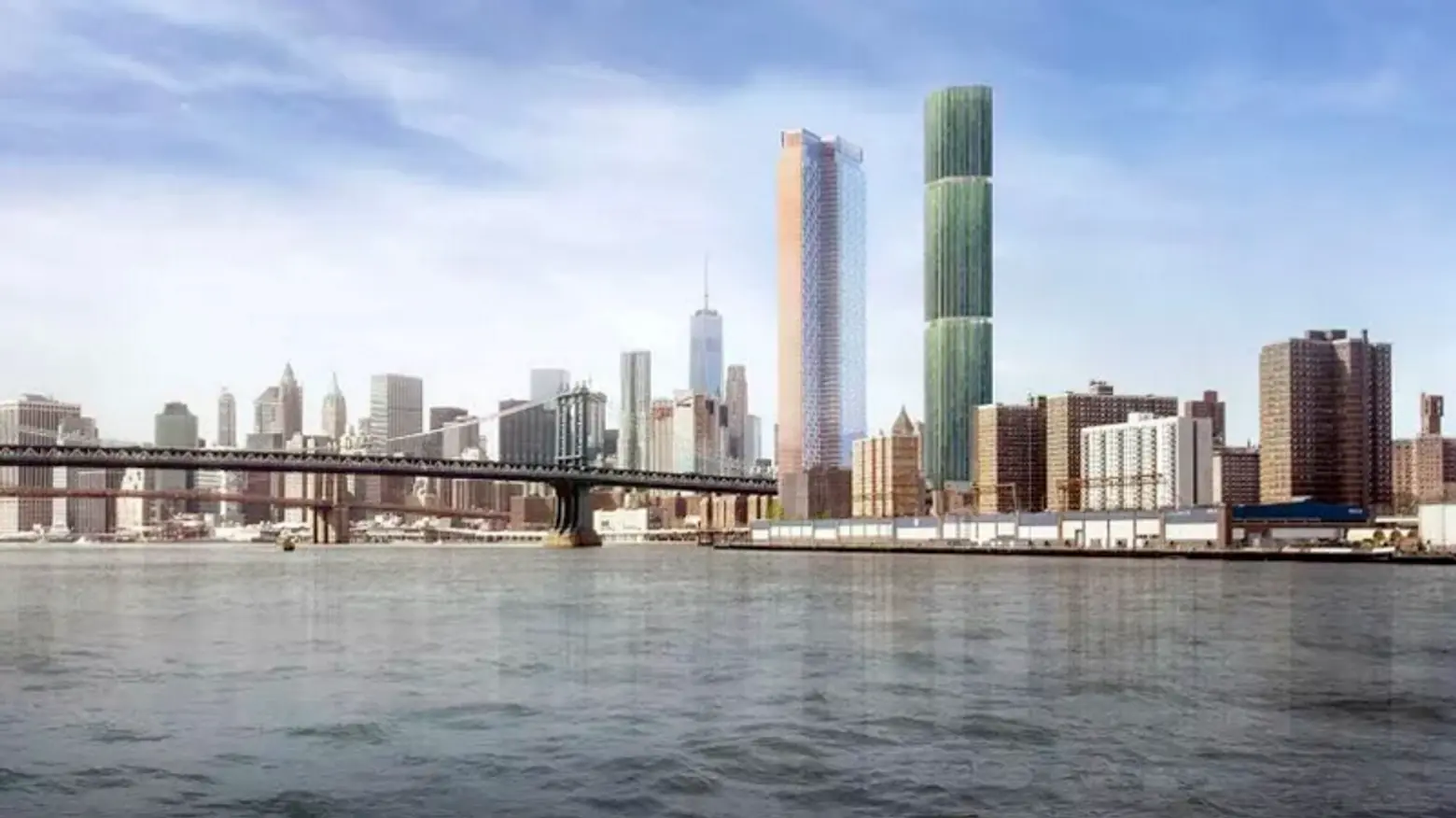 (R) Rendering of 247 Cherry Street via SHoP Architects; (L) One Manhattan Square
(R) Rendering of 247 Cherry Street via SHoP Architects; (L) One Manhattan Square
Over on the East River Esplanade is the Lower East Side’s other large swatch of development in the area known as Two Bridges. Two Bridges is a neighborhood at the southern end of the LES, near the Brooklyn and Manhattan Bridges. In the 1930s, a large portion of Two Bridges was raze to build Knickerbocker Village, a 12-building complex that was one of the first middle-income developments subsidized by the federal government. Today, developments at the nearby waterfront development site include a 1,000+ foot tower at 247 Cherry Street from JDS Development Group and SHoP Architects, two 50-story towers at 260 South Street from L+M Development and CIM Group, and a 724-foot rental building from Starrett Development at 275 South Street.
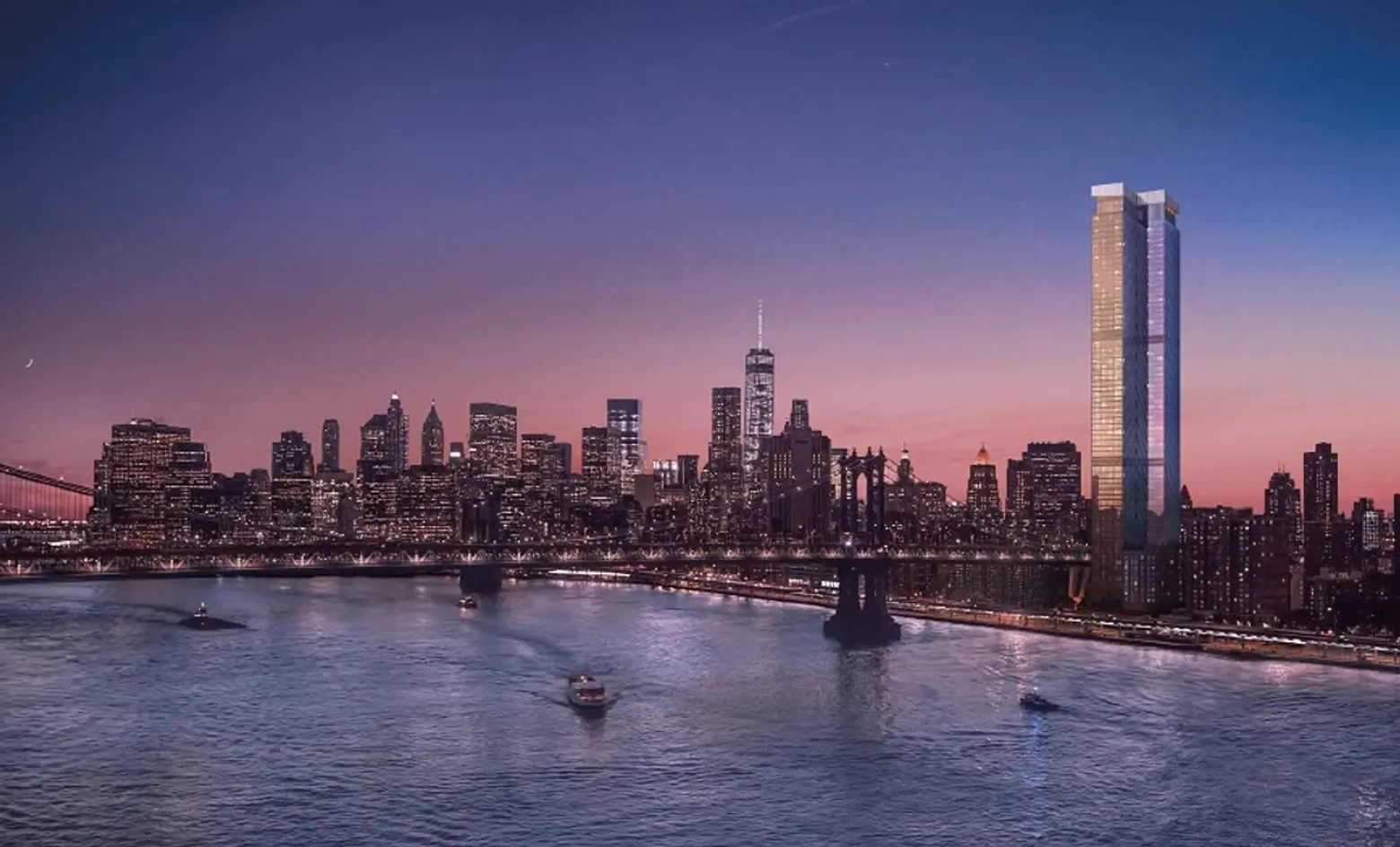
But the project that spearheaded all the Two Bridges development is the 800-foot-tall, Adamson Associates-designed One Manhattan Square, which will have 815 luxury residences with panoramic skyline views, along a whooping 100,000+ square feet of indoor and outdoor amenities. (It was also chosen as 6sqft’s 2017 Building of the Year!)
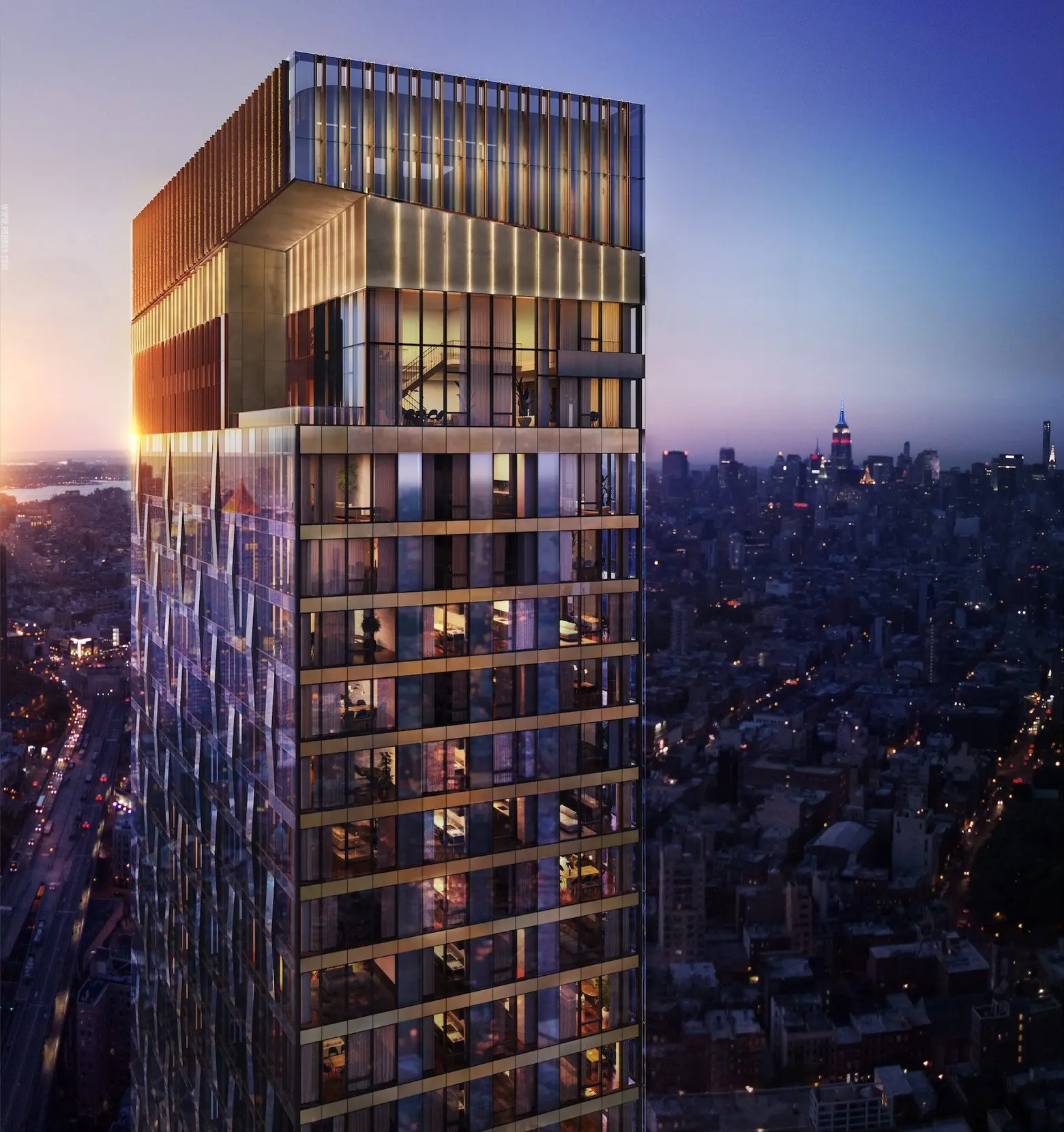
Raizy Haas, SVP of Development at Extell, is very passionate about One Manhattan Square. Haas explains how people thought Extell was crazy for building on the LES but, “We saw an opportunity, a prime waterfront property and we knew if we built a beautiful, good building with the right unit mix, layouts, finishes and amenities, people would come. It checks off all of our boxes.” 47% of the 815 condos are one-bedroom units. Haas says the views from the building are so unobstructed, “You get a birds-eye view of the entire tri-state area.” And to capitalize on that, Extell created its Skyscape Collection, 25 condos on the upper floors.
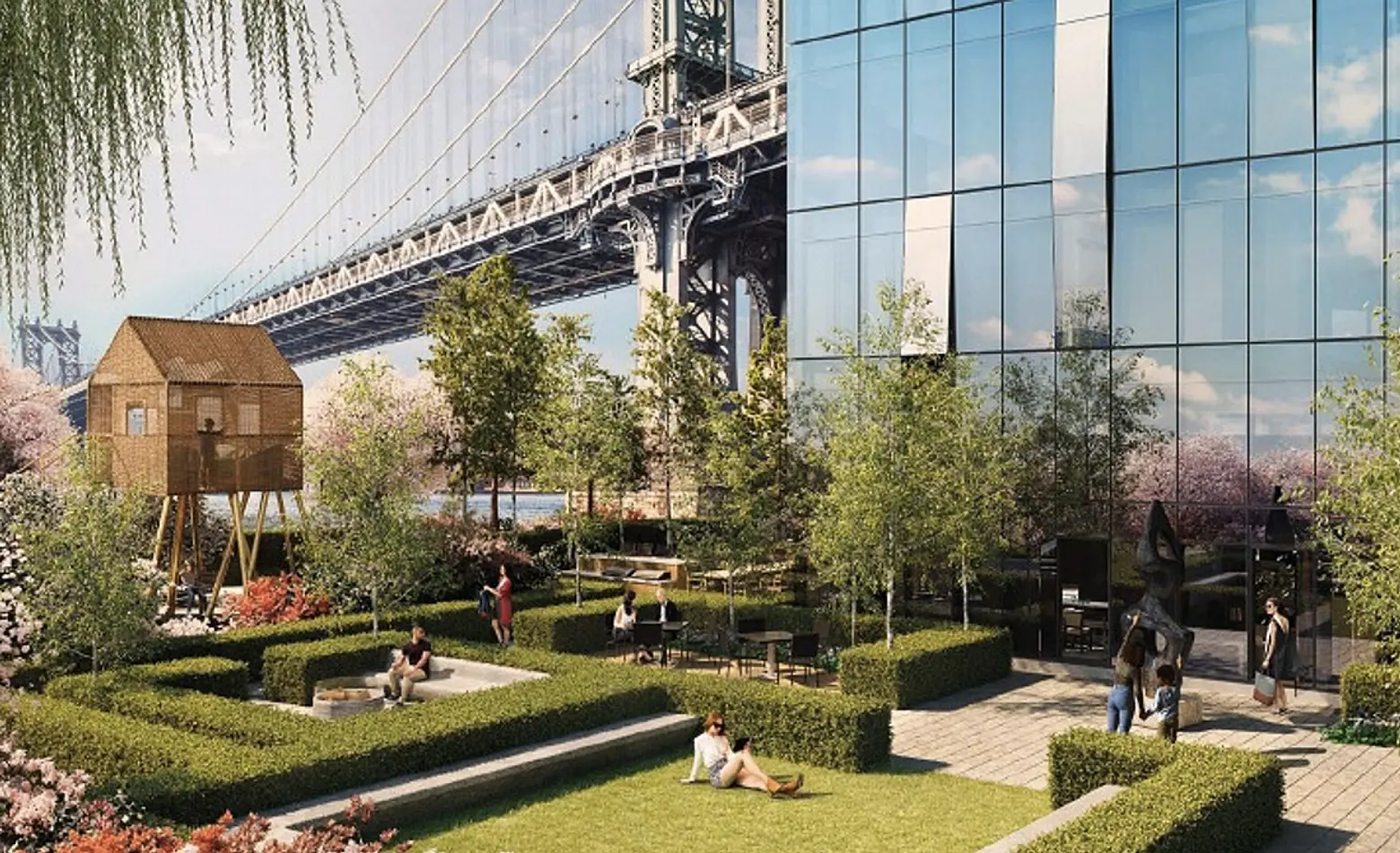
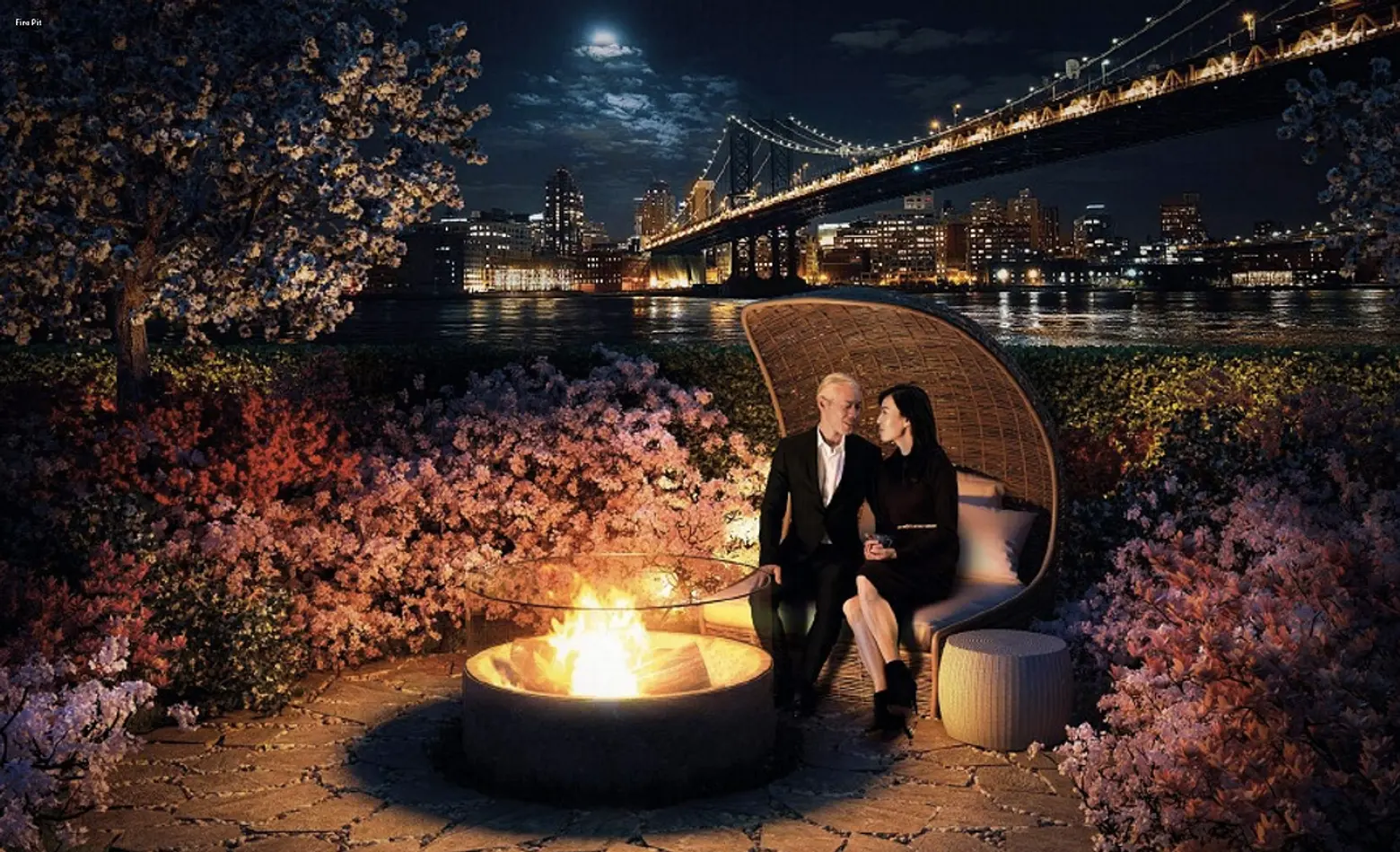
The major stand out feature of this building is the 100,000 square feet of amenities. “That alone is a building,” says Haas. “If you want to stay home and enjoy what you have in this vertical village, you can. But if you want all the culture, museums, art galleries, fine dining, and shopping, you are minutes away from everything.”
In addition to a spectacular fitness center and basketball and squash courts, the building will boast NYC’s largest outdoor private garden. This includes 45,000 square feet of private gardens, a sumac meandering, private courtyards and social courtyards, an herbal communal garden, social firepits, and “romantic” firepits, an adult treehouse with wifi, a star-gazing observatory deck, outdoor ping pong, outdoor dining, a putting range, a tea pavilion, and an outdoor covered dog run with built-in audio to play music for the pups.
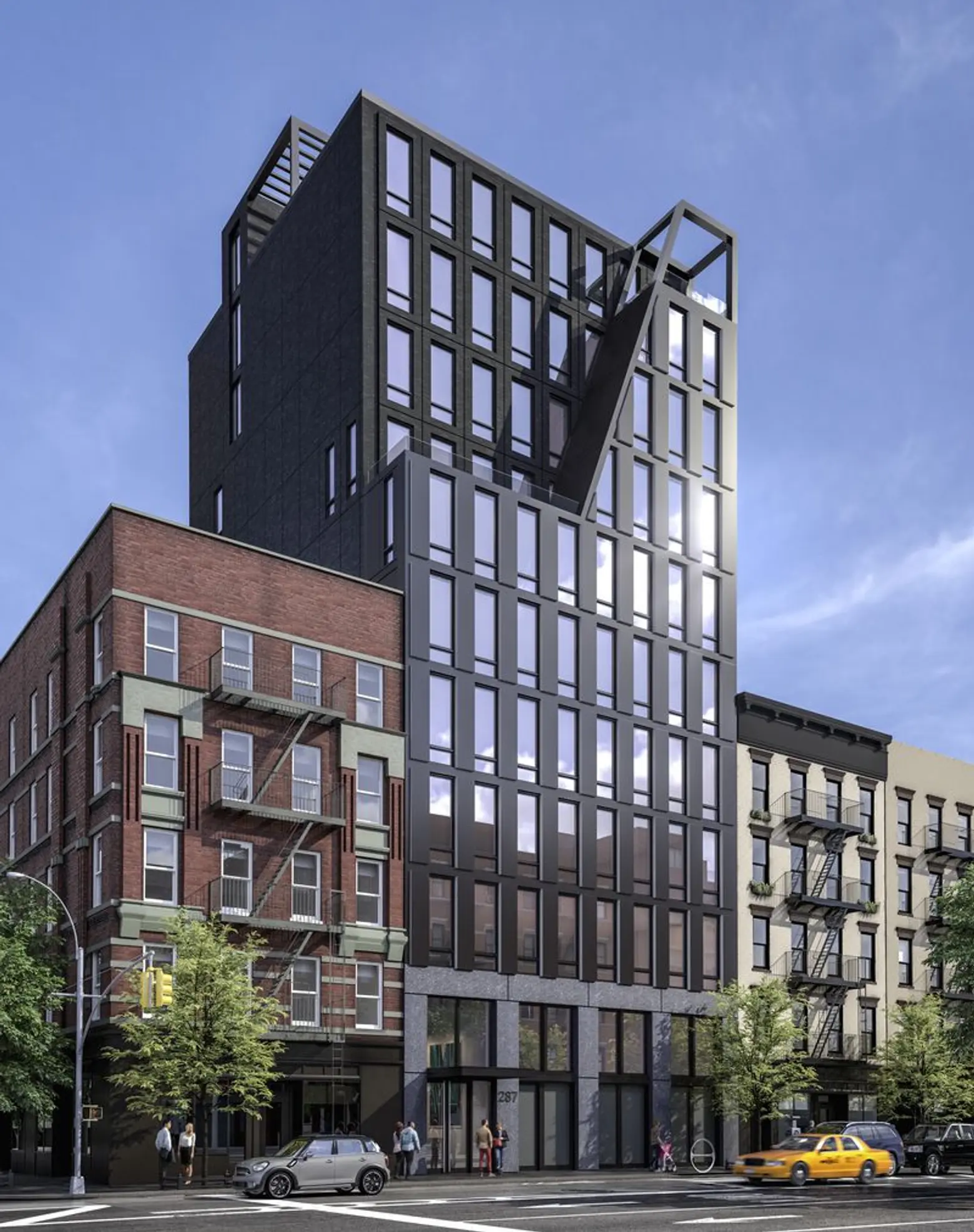 Renderings of 287 East Houston Street via Hogg Holdings
Renderings of 287 East Houston Street via Hogg Holdings
287 East Houston Street is a modern interpretation of the classic cast iron buildings that graced the early Lower East Side, with a facade comprised of blackened steel and black textured brick. Shelley O’Keefe, the Corcoran broker leading the marketing campaign for 287/LES, said “This is a community people are proud of. We’re trying to integrate into the neighborhood, not disrupt it.” With occupancy anticipated for summer 2018, 287 East Houston’s 27 residences blend contemporary style and sophistication with the character and heritage of New York’s Lower East Side. This is the first U.S. project for Brazil-based developer Vinci Partners.
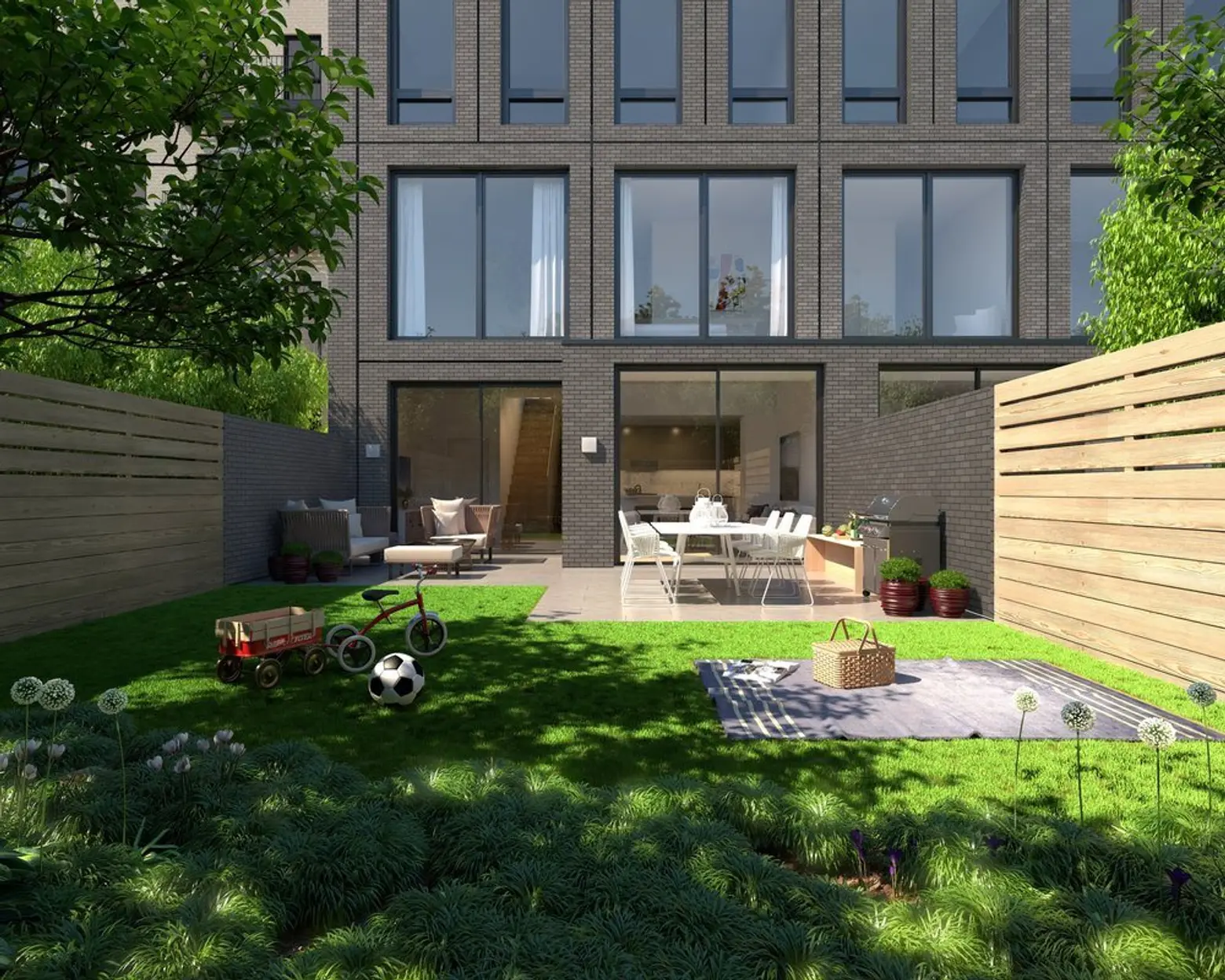
The building has two maisonettes with 25×35 southern exposure landscaped yards. Andres Hogg of Hogg Holdings explains that because of zoning restrictions, there is a height limit to the south of the building, which affords those great LES views.
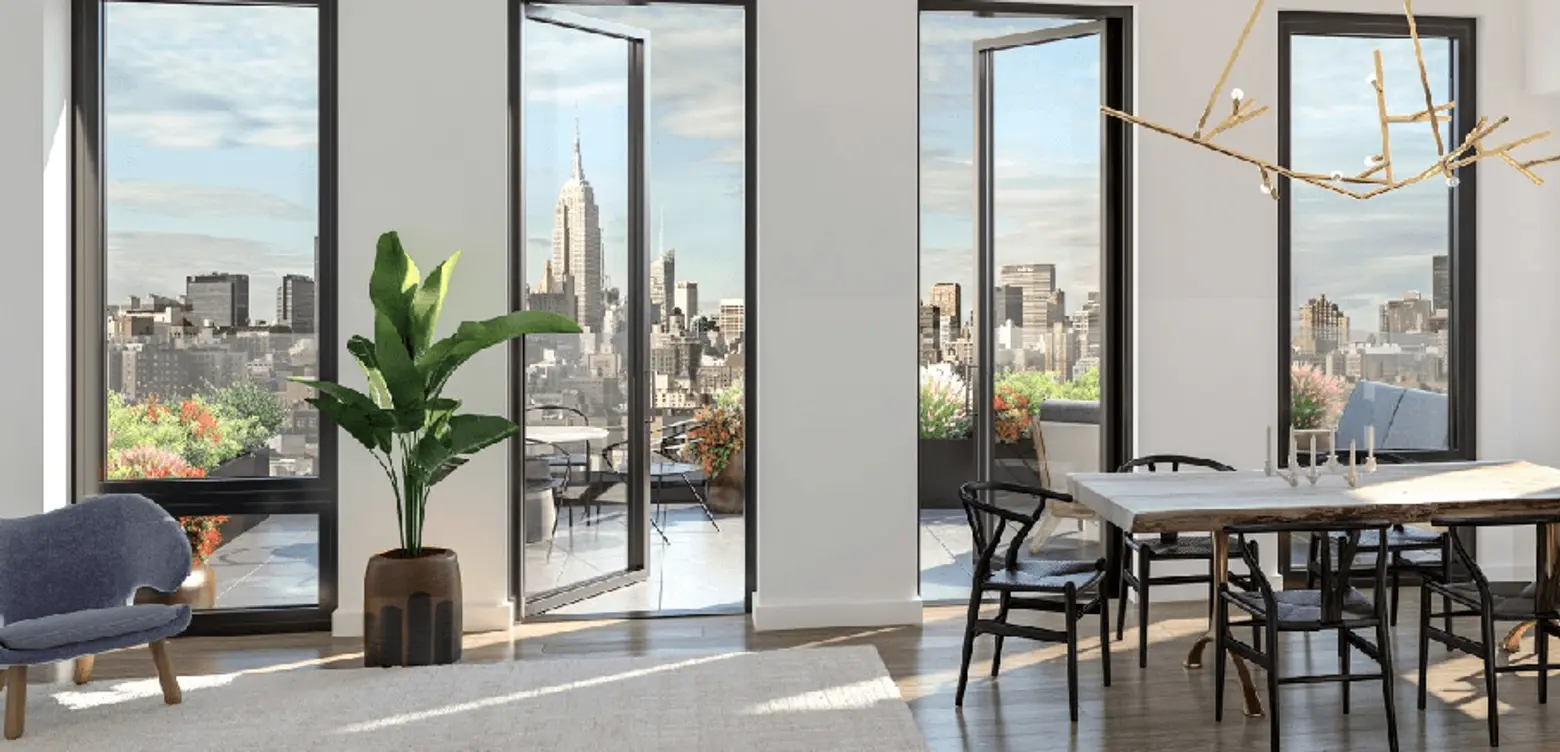
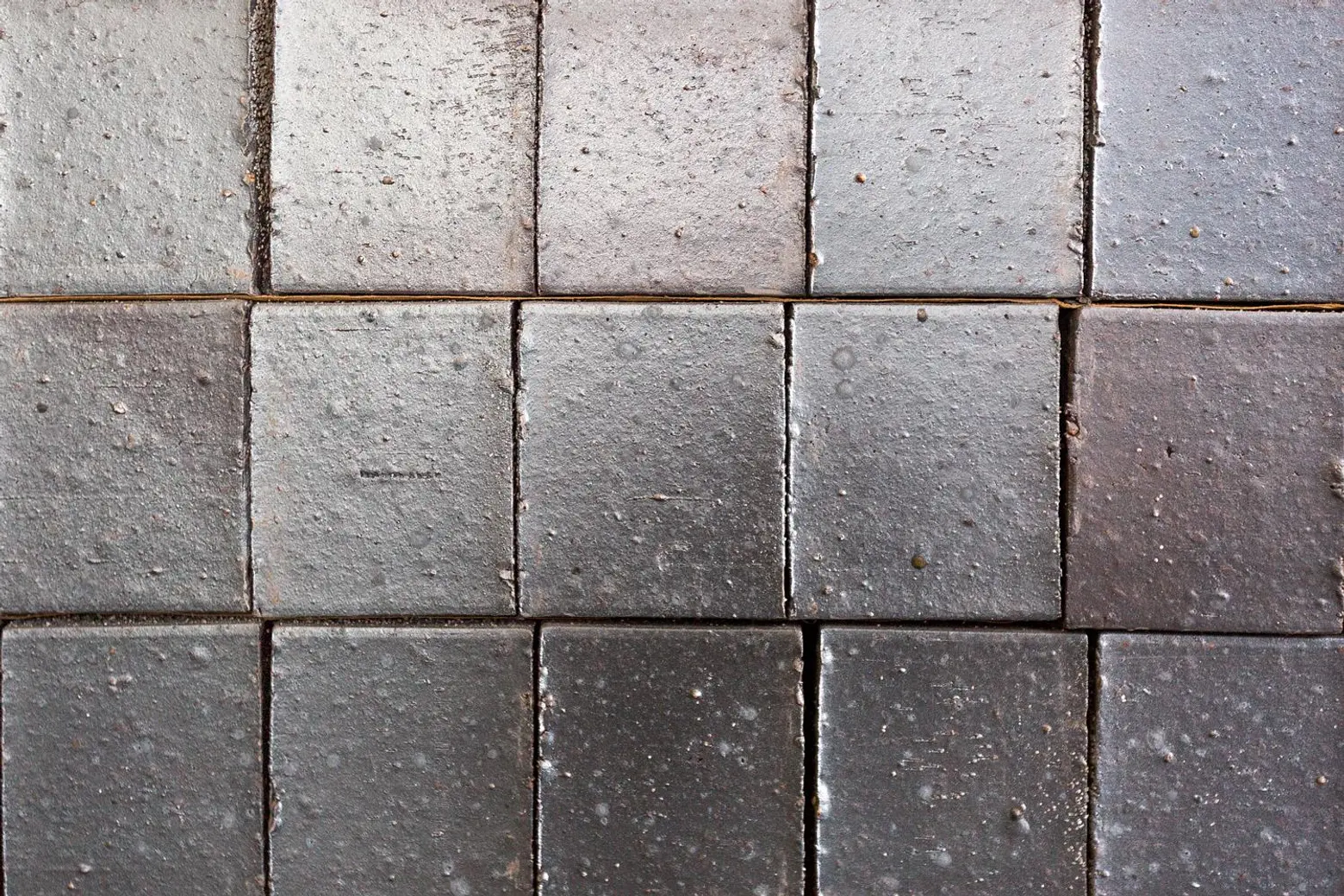
Hogg said they specifically did not overload the building’s amenities because of the small scale of the 12-story building and what he views as a very active neighborhood, “It’s already in the best neighborhood that has everything that people need.” Additionally, Hogg prioritized quality finishes, such as sleek doors and windows by Polito, Italian interior wood doors and the textured, grey exterior brick. He says, “The gray brick that exterior is gorgeous and very high quality. It is going to look amazing when the scaffolding is down.”
Hogg is thrilled with the Essex Crossing development nearby, “We like competition because it forces everyone to create quality products, brings in jobs in the area and is also bringing all the big names to Essex Market.” He adds, “It is so important to keep the charm of this neighborhood and make sure it doesn’t transform completely and get destroyed. The Lower East Side has a history that a lot of other neighborhoods don’t have. And a lot of the older residents are still there. We need to creating something people will appreciate slowly.”
Life on the East River
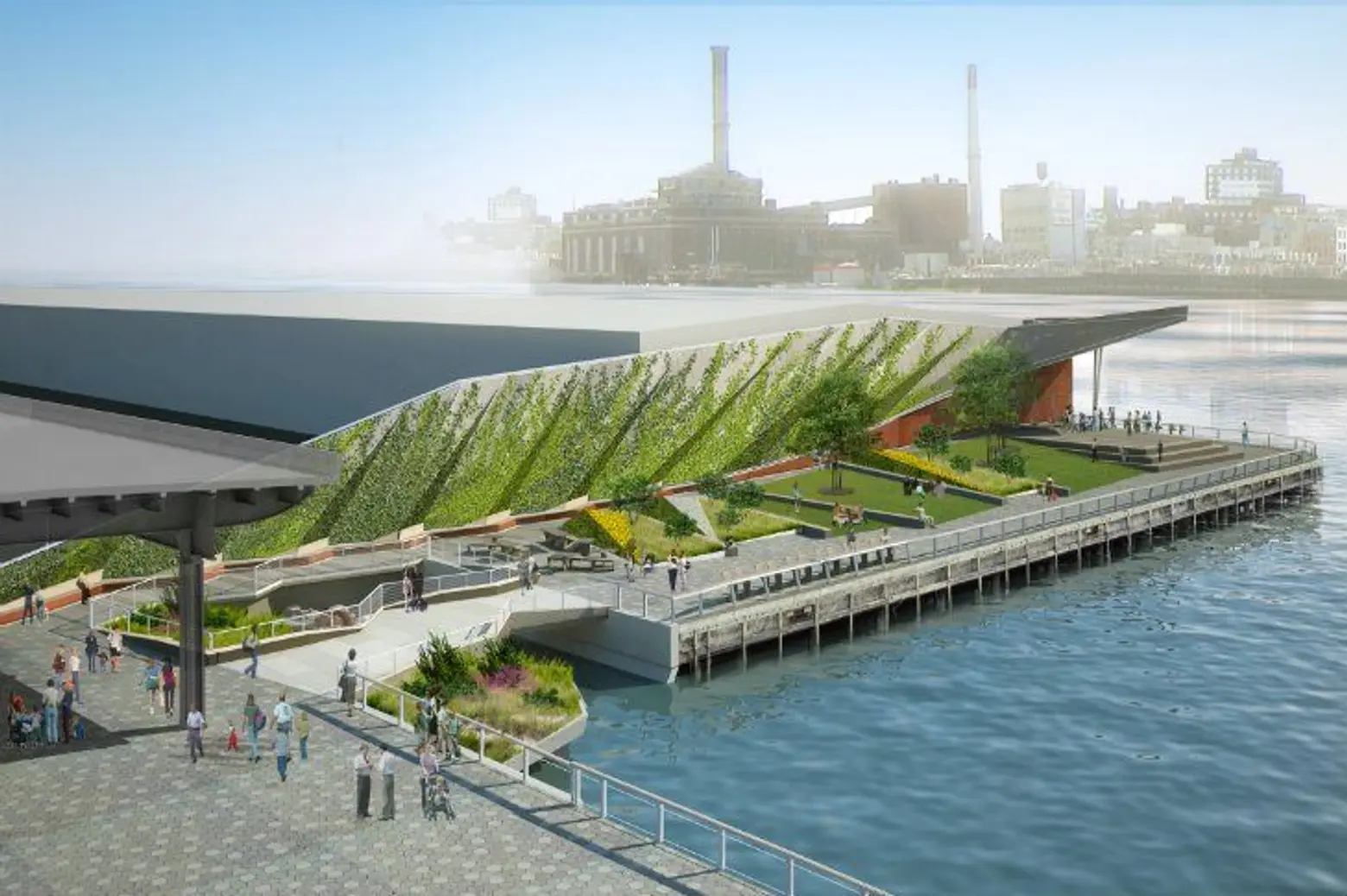 Rendering of the new East River Waterfront, via NYCEDC
Rendering of the new East River Waterfront, via NYCEDC
Similar to the West Side highway, the East Side highway will have more outdoor exercise equipment, benches, walking paths and plantings by the end of 2019. The East River study reports, “Though currently underutilized and poorly connected to the surrounding community, the south-facing East River waterfront of Lower Manhattan is a spectacular untapped asset. Its world renowned downtown backdrop and great vistas of historic bridges and the Brooklyn skyline provide a unique opportunity for waterfront revitalization in a world class setting.”
Art Galleries
Sue Stoffel, a collector, trustee and visual arts supporter recreated the “Downtown Gallery Map” as her way to give back to the galleries on the Lower East Side. It started as a Lower East Side specific map but since the project began 4 years ago, “the LES art scene has grown and spread to TriBeCa and Soho.” There are currently 122 art galleries south of Houston.
Stoffel says, “Some of the good dealers downtown were the interns of Chelsea galleries, who were the interns of the Upper East Side and 57th Street gallerists.” Stoffel says that much of the gallery migration down to the Lower East Side was driven by gallerists investing in real estate by buying their own properties.
Stoffel highlights the following galleries as the real standouts in the neighborhood: Andrew Edlin Gallery (the founder of the Outsider Art Fair), Canada, Derek Eller, Perrotin (“who gave up a townhouse on 73rd and Madison to buy an extraordinary landmarked building on the LES.” He also has outposts in Paris, Hong Kong, Seoul and Tokyo), Rachel Uffner Gallery and Salon 94 (who also left the Upper East Side to come to the LES).
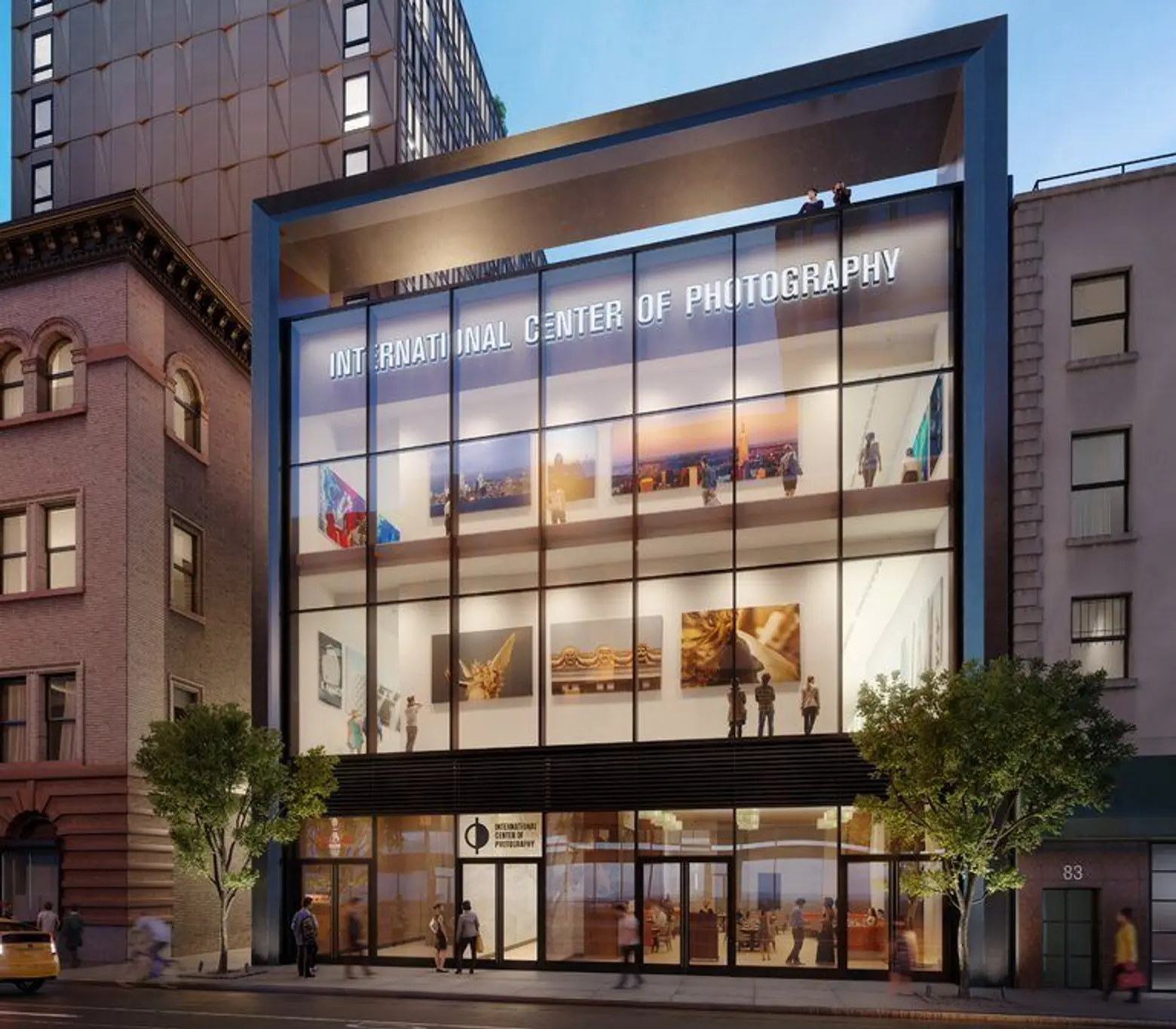 Rendering of ICP at 242 Broome, via Moso Studio
Rendering of ICP at 242 Broome, via Moso Studio
Additionally, last fall, the International Center of Photography announced plans to relocate its school and photography museum under one room at 242 Broome.
The Food Scene
 Because of its diverse ethnic roots, the Lower East Side has always been defined by its food. Grubstreet waxes on about the amazing foodie options on the LES, and rightly so. From traditional favorites like Katz’s Deli to newer options like 19-year old prodigy Flynn McGarry’s Gem, there is something for everyone at all price levels.
Because of its diverse ethnic roots, the Lower East Side has always been defined by its food. Grubstreet waxes on about the amazing foodie options on the LES, and rightly so. From traditional favorites like Katz’s Deli to newer options like 19-year old prodigy Flynn McGarry’s Gem, there is something for everyone at all price levels.
Some notables are:
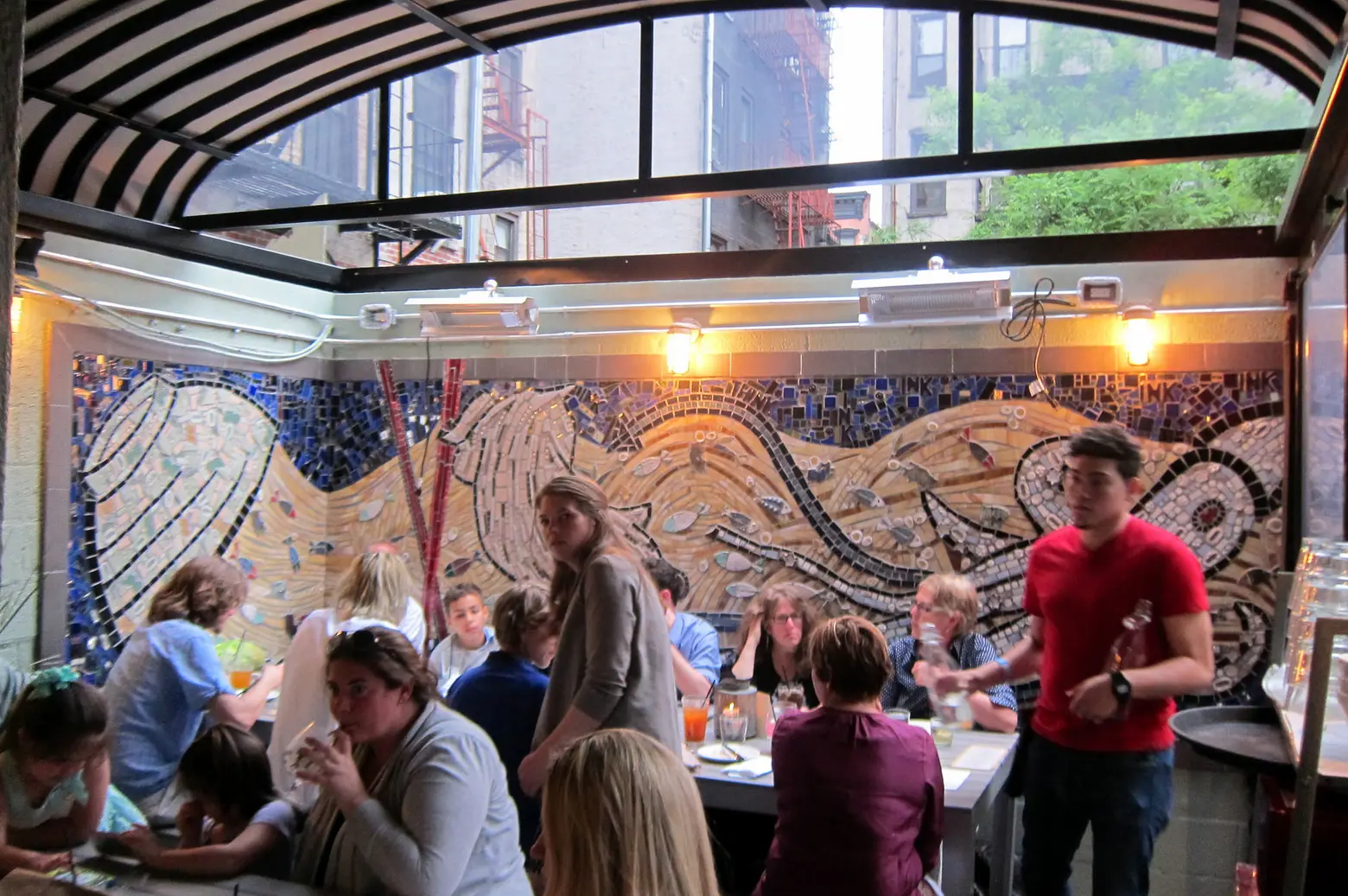 Ivan Ramen via Wally Gobetz/Flickr
Ivan Ramen via Wally Gobetz/Flickr
Dirt Candy, Amanda Cohen’s, the “anyone can cook a hamburger, leave the vegetables to professionals” chef’s restaurant is consistently lauded as one of the best restaurants in the best restaurants in the country.
Fed up with his pop up restaurants, Gem, 19-year-old Flynn McGarry’s new LES restaurant offers two different “experiences,” the Living Rooms serves coffee, tea, pastries and snacks and the Dining Room serves a 12-course menu to two seatings of 16 guests for $155.
Mission Chinese began in San Francisco’s Mission district and is now fine dining and offers menu items such as a wood-oven pizza and kung pao pastrami.
Chef Ivan Orkin was born and raised in Tokyo, went to university in Colorado and returned to Tokyo to open a ramen shop as an outsider. His cross cultural experience took the best from both of his worlds and resulted in the huge success of Ivan Ramen. The small storefront offers traditional ramen and amazing appetizers, such as mushroom tempura and “tofu coney island” (miso mushroom chili, yellow mustard and scallions).
Classically trained chef Luis Arce Mota’s offers a traditional menu with french accents and “alt agave spirits” at La Contenta. Highly recommended are the crispy fish tacos with an “El Easy Rider.”
There are also a surplus of cool cocktail bars, such as Sel Rose, Dirty French, Contra and Attaboy.
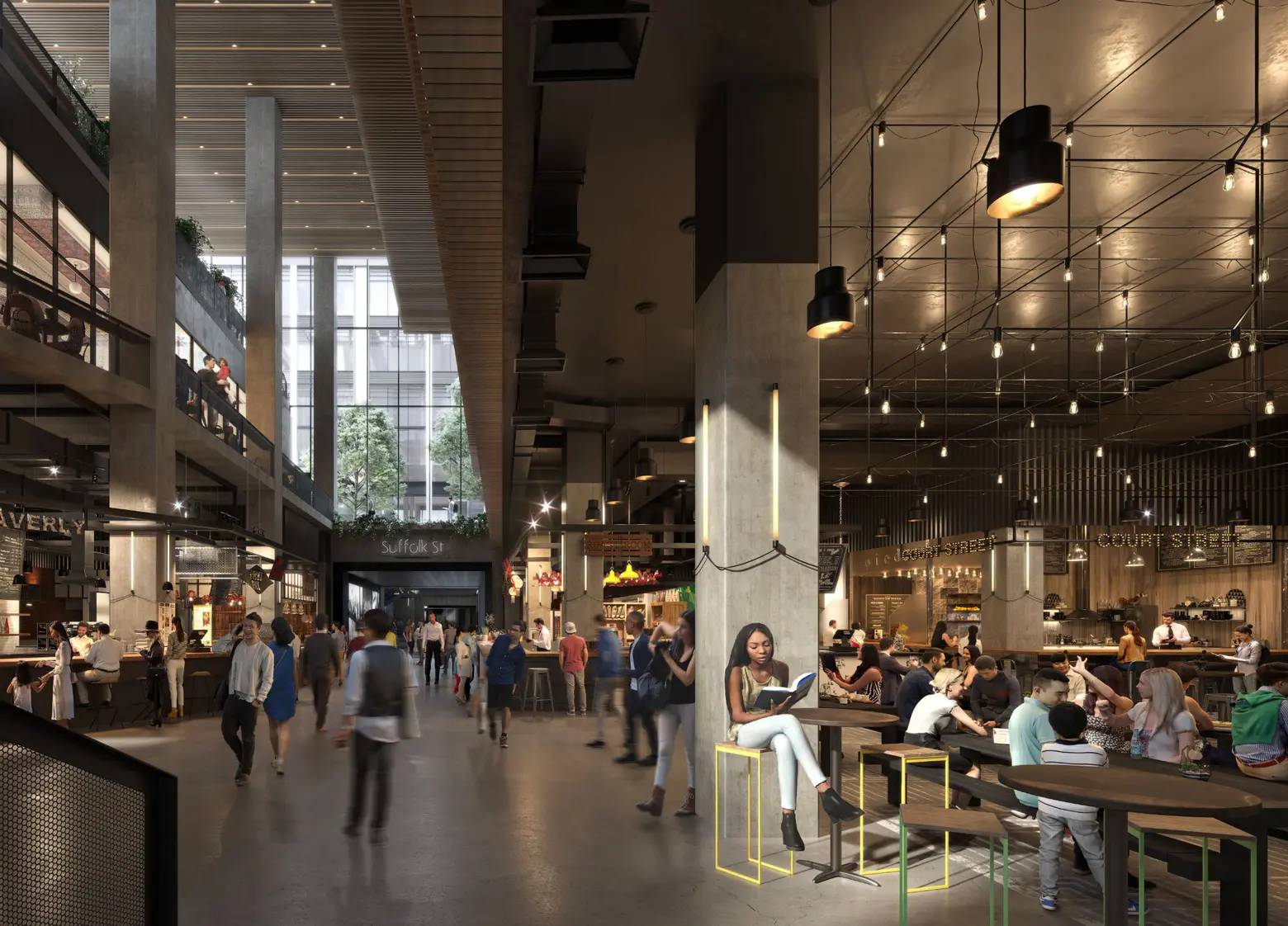
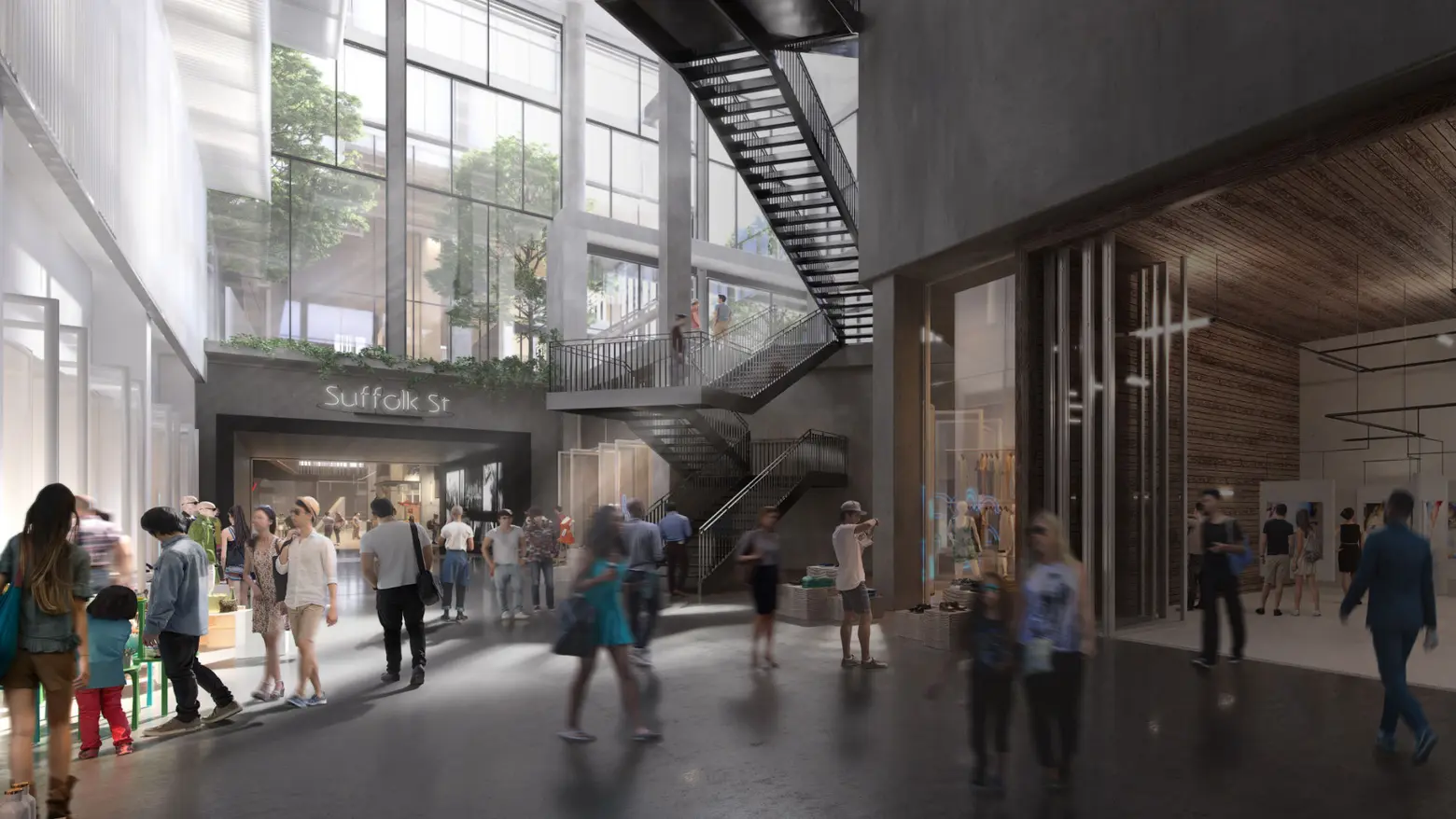 Renderings courtesy of SHoP Architects for Market Line
Renderings courtesy of SHoP Architects for Market Line
Essex Crossing is building “Market Line,” a large bazaar-like marketplace that will span three city blocks along Broome Street. The Market Line have more than 100 locally sourced food, art, music and fashion vendors, according to their site will “reflect the character and culture of the LES.” When completed, the 150,000-square foot Market Line will not only be the largest market in New York City, it will be one of the largest in the world, putting it on par in size and scope with Barcelona’s La Boqueria and London’s Borough Market. It will not only boast new food vendors like ramen shop Kuro-Obi by Ippudo and Queens’ famed taco spot Tortilleria Nixtamal, but old-time mom-and-pops that reflect the neighborhood’s history, such as the Upper East Side’s 100-year-old German meat market Schaller & Weber and the East Village’s Ukrainian institution Veselka.
Stores
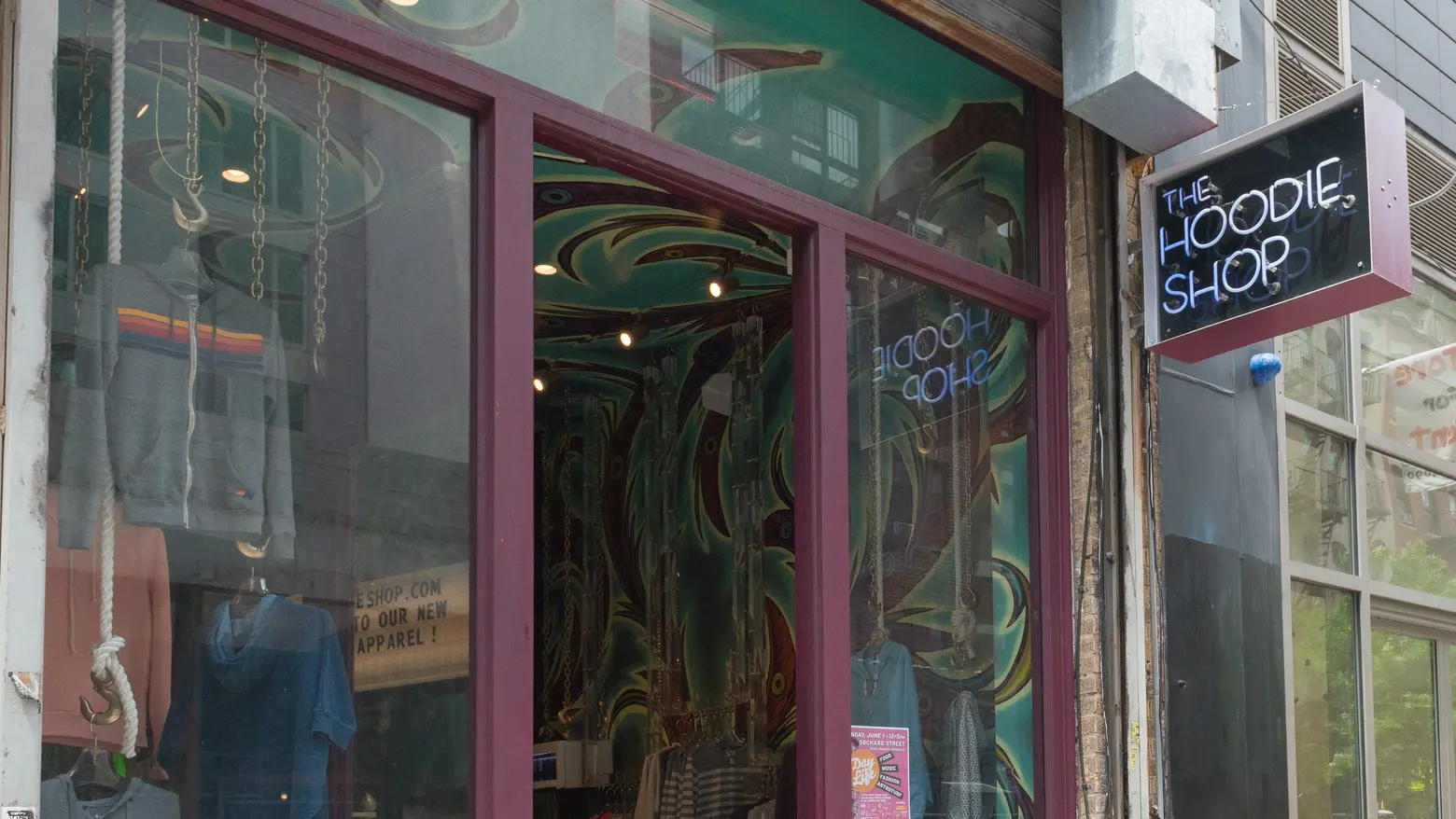 Via CityRealty
Via CityRealty
As is the pattern, there are a lot of very cool shopping options on the LES. Some standouts are:
Alife, a NYC-based lifestyle concept focused on art and creativity with a strong penchant for originality. “Alife’s mission is to showcase, elevate and perpetuate the Downtown.”
Assembly New York, the super avant-garde clothier with drapey dressed and clunky shoes.
Freemans Sporting Club, the NYC-based men’s retailer for handmade goods made locally, specializing in custom suiting and is also a barbershop.
Self Edge, specializing in Japanese denim (there’s denim cooler than American denim?).
Transportation
Coming this summer a new Ferry route will make the commute from Stuyvesant Town to Wall Street 19 minutes. The Lower East Side route will make five stops during an approximately 32-minute long trip: Long Island City, East 34th Street, Stuyvesant Town, Corlears Hook and Wall Street/Pier 11.
Several bus lines go to the Lower East Side, or you can take the J, M, or Z subway lines to Essex Street; the F to Delancey St (which is connected to the J/M/Z Essex St station), E Broadway, or 2nd Ave; or you can take the B or D to Grand St.
Citibike stations on almost every block and access to FDR make leaving the city a quick option.
+++
